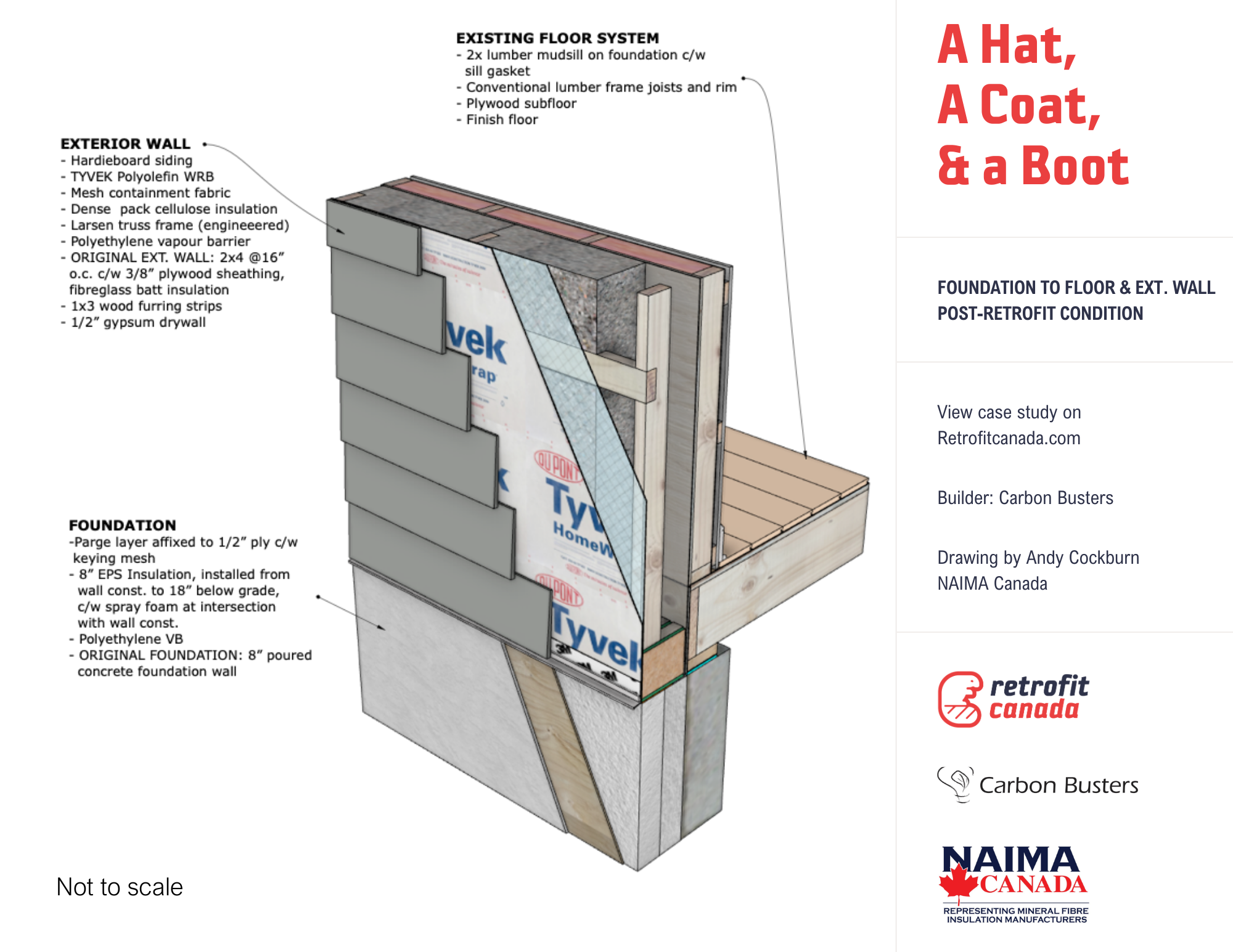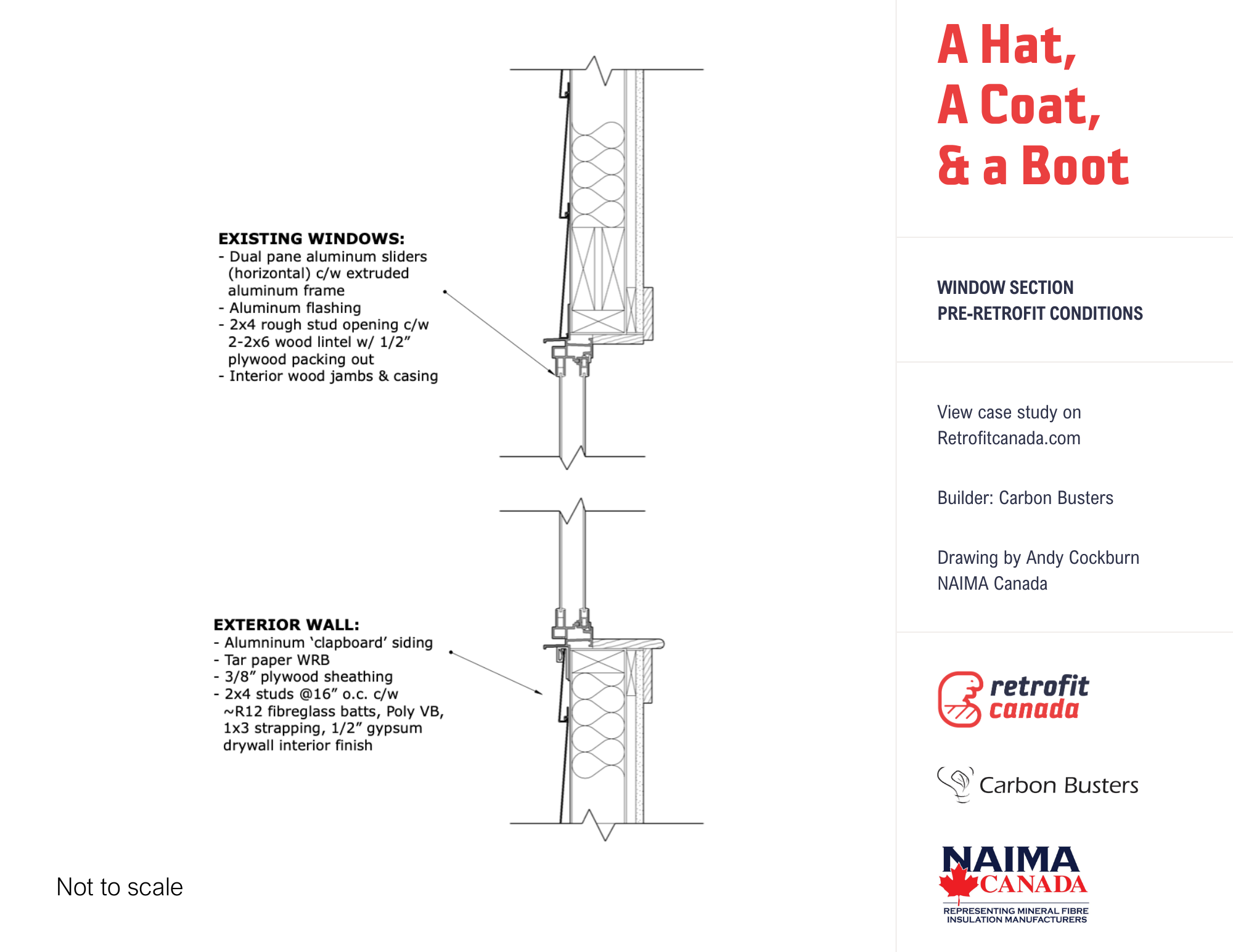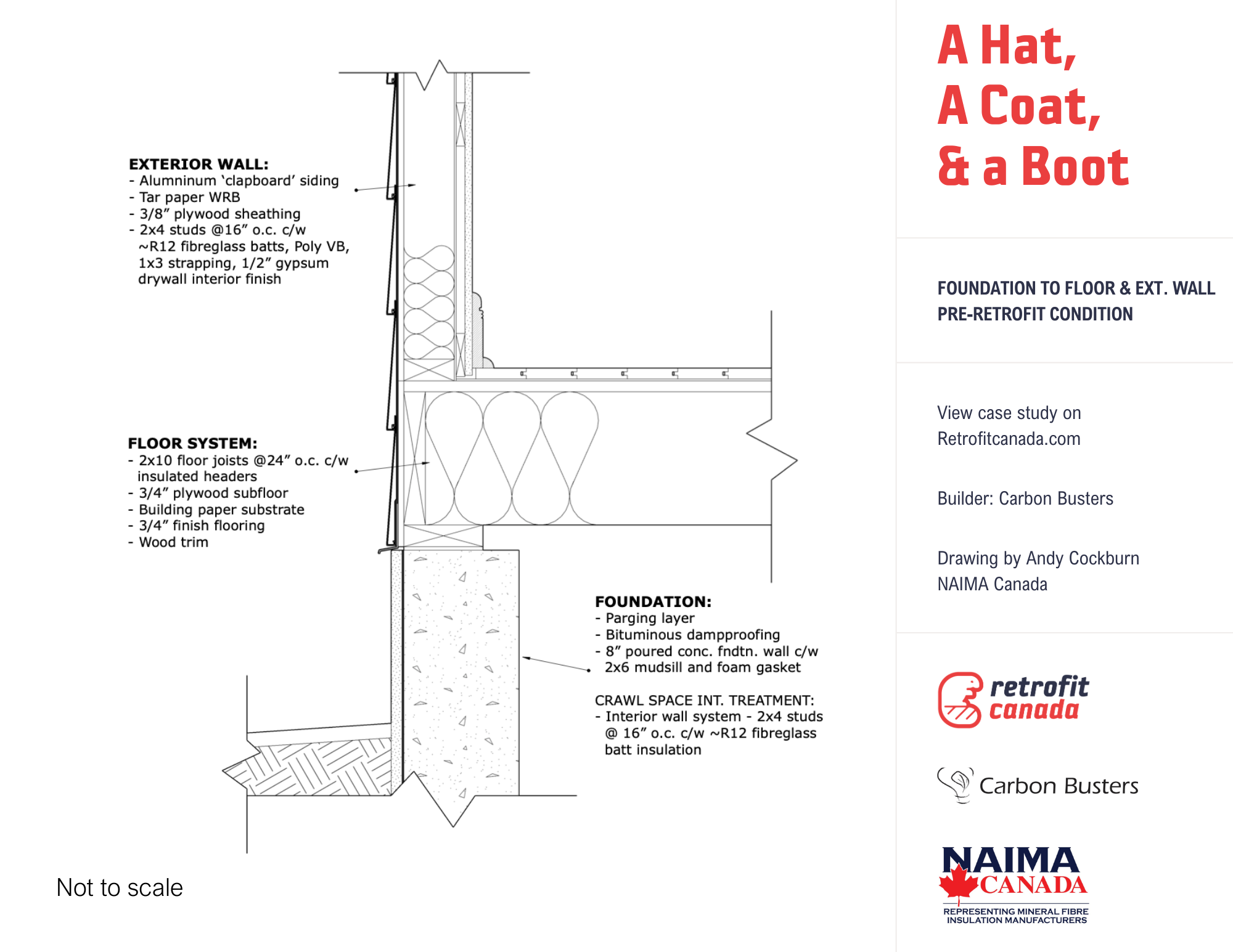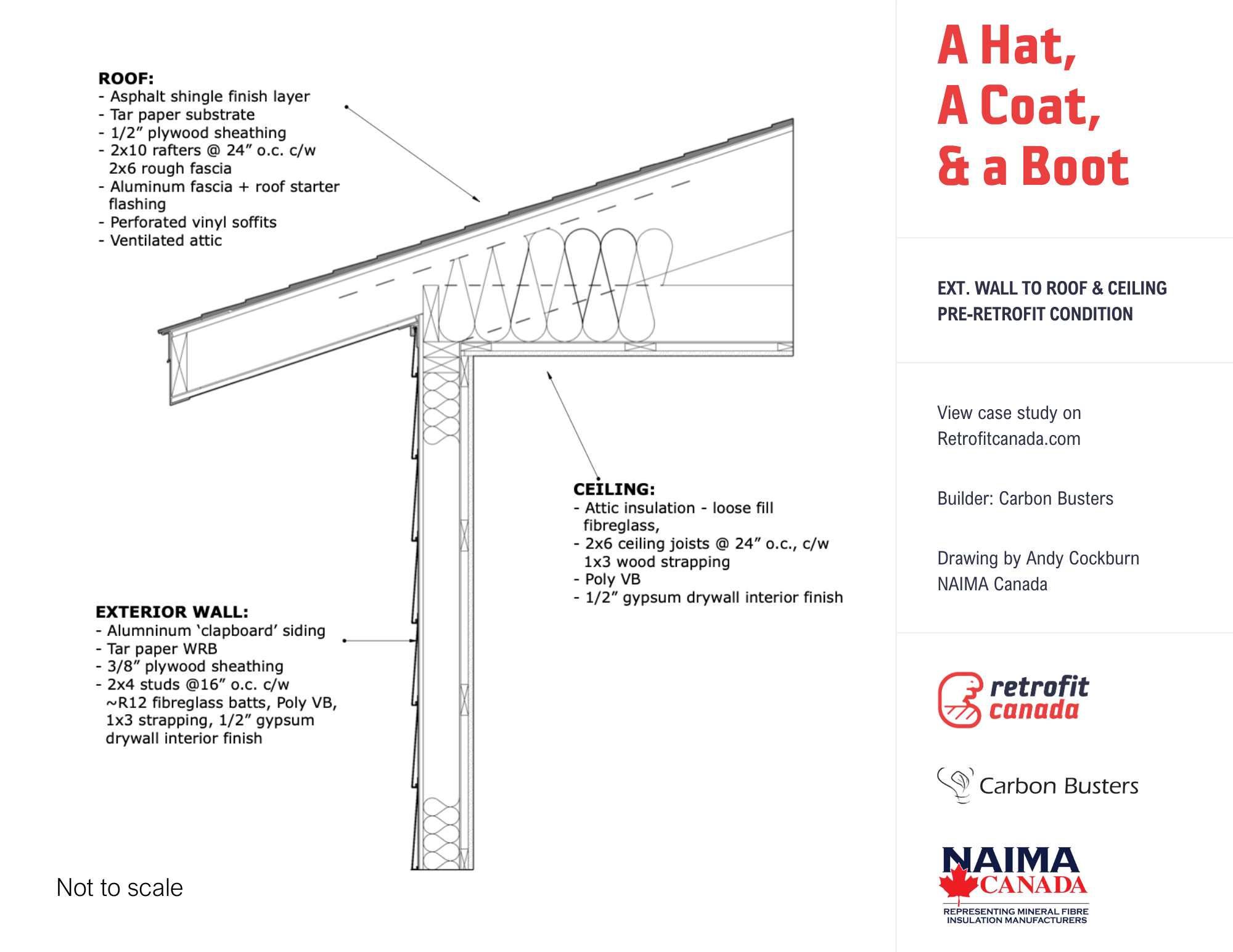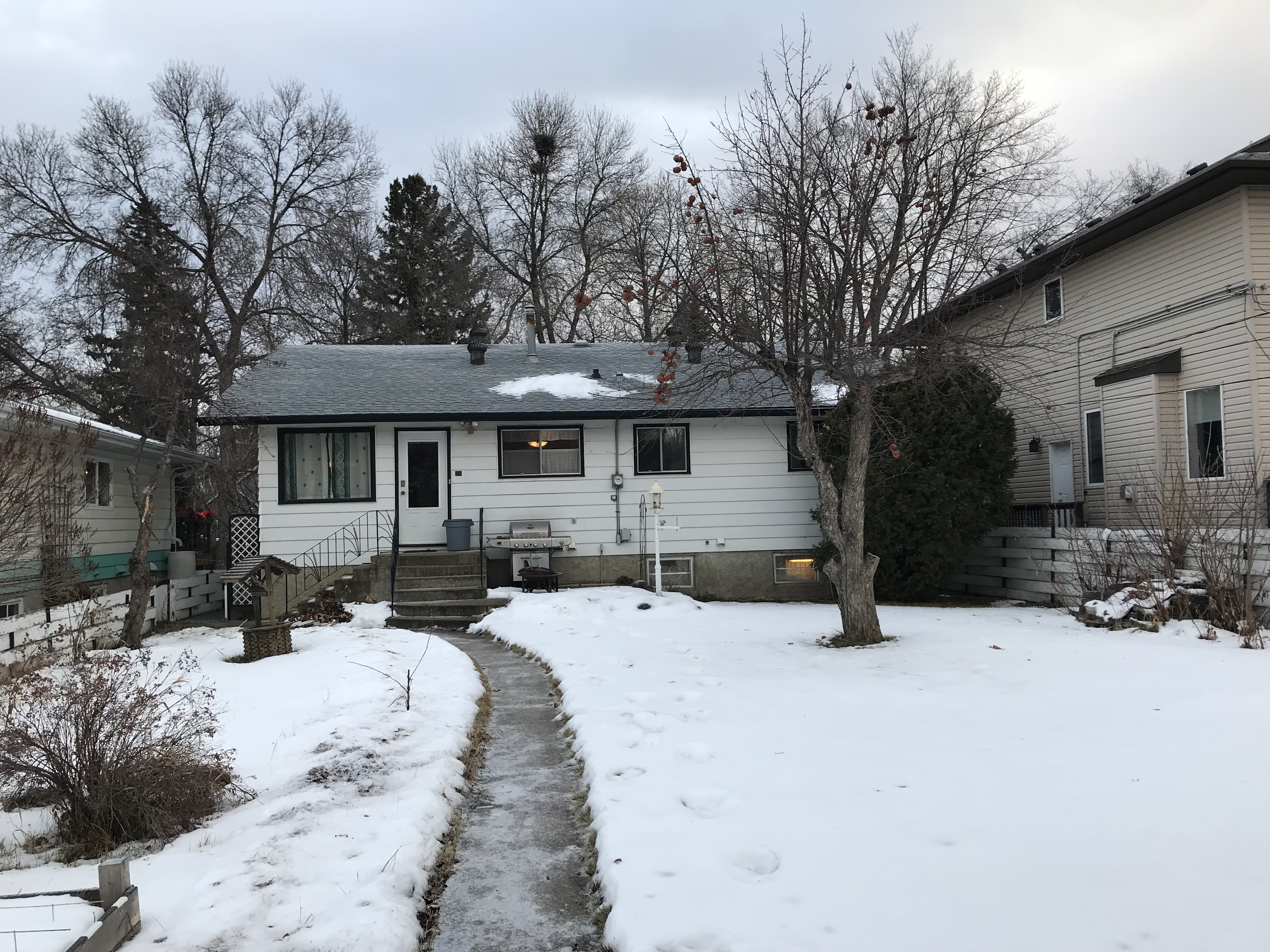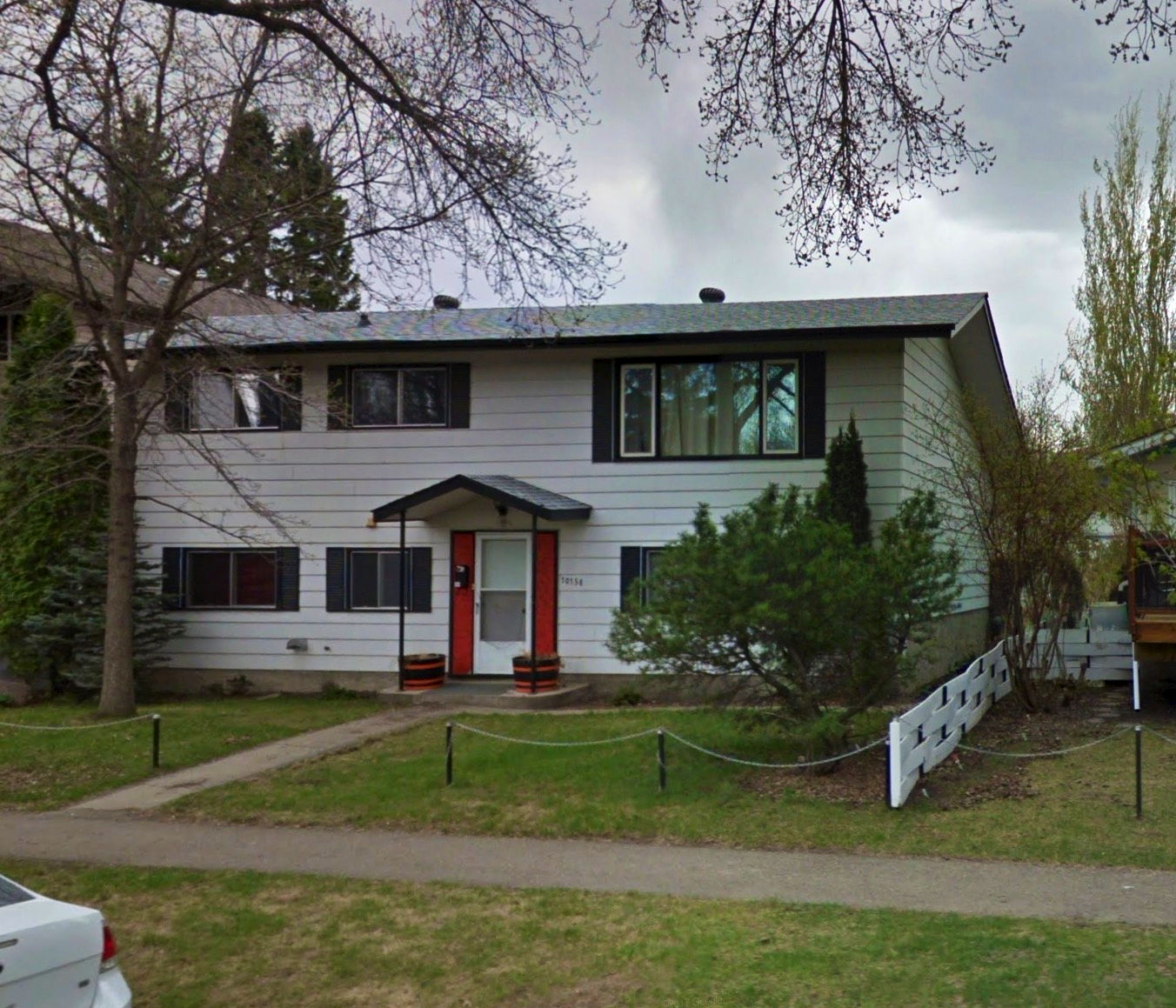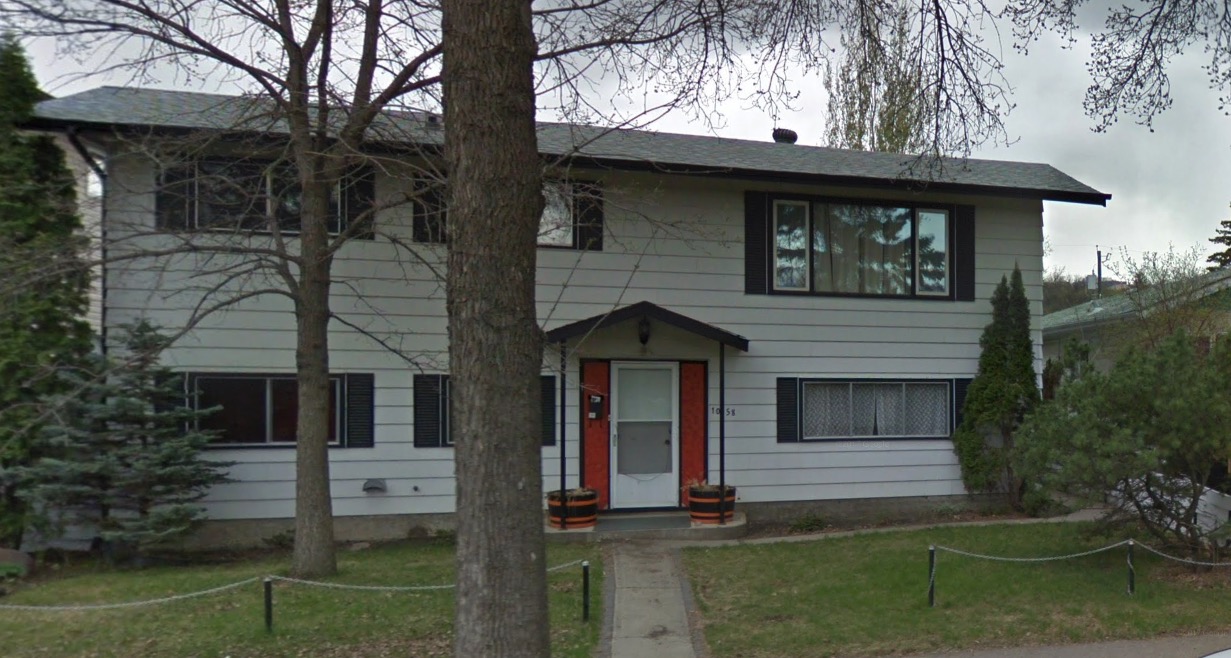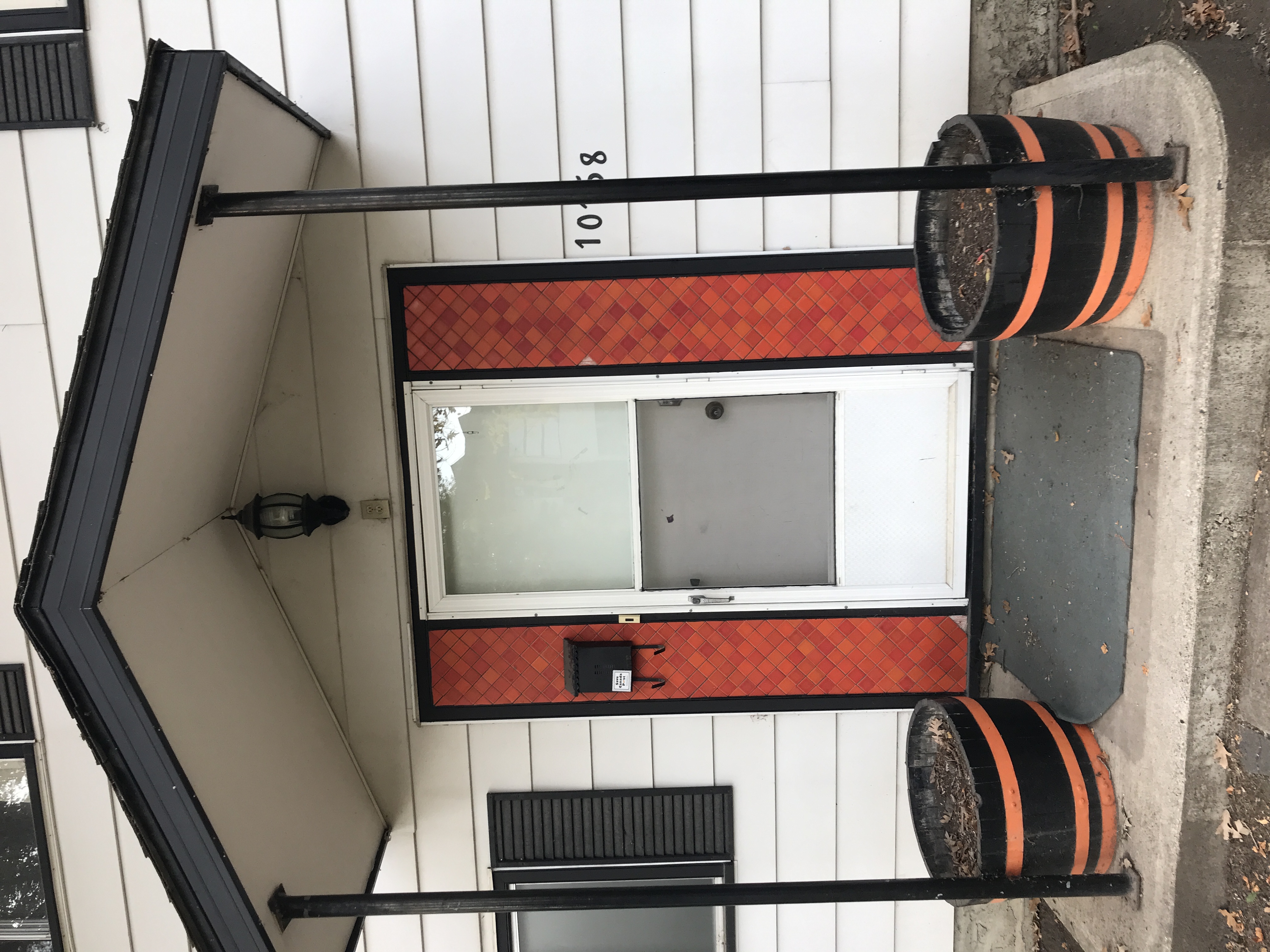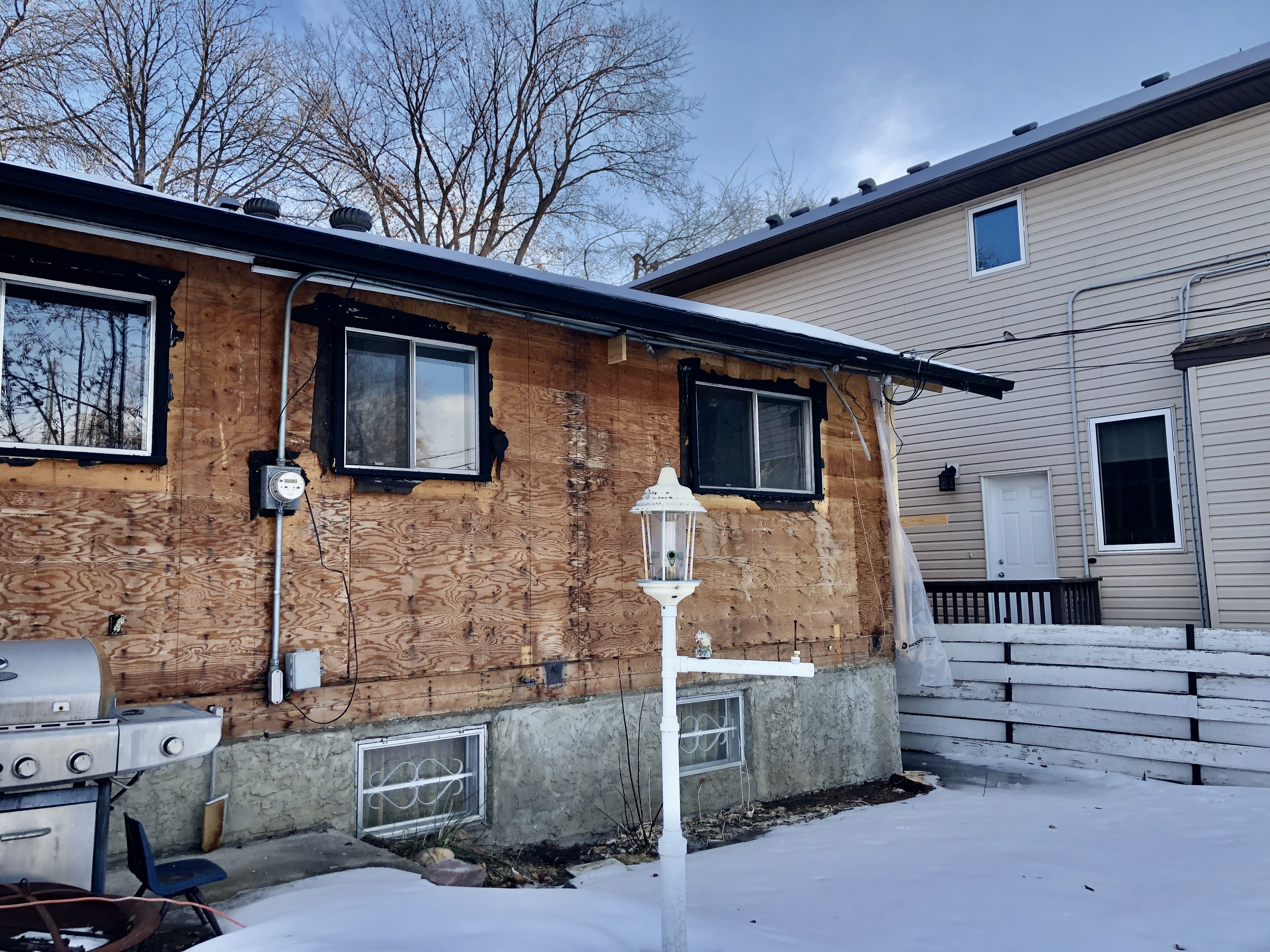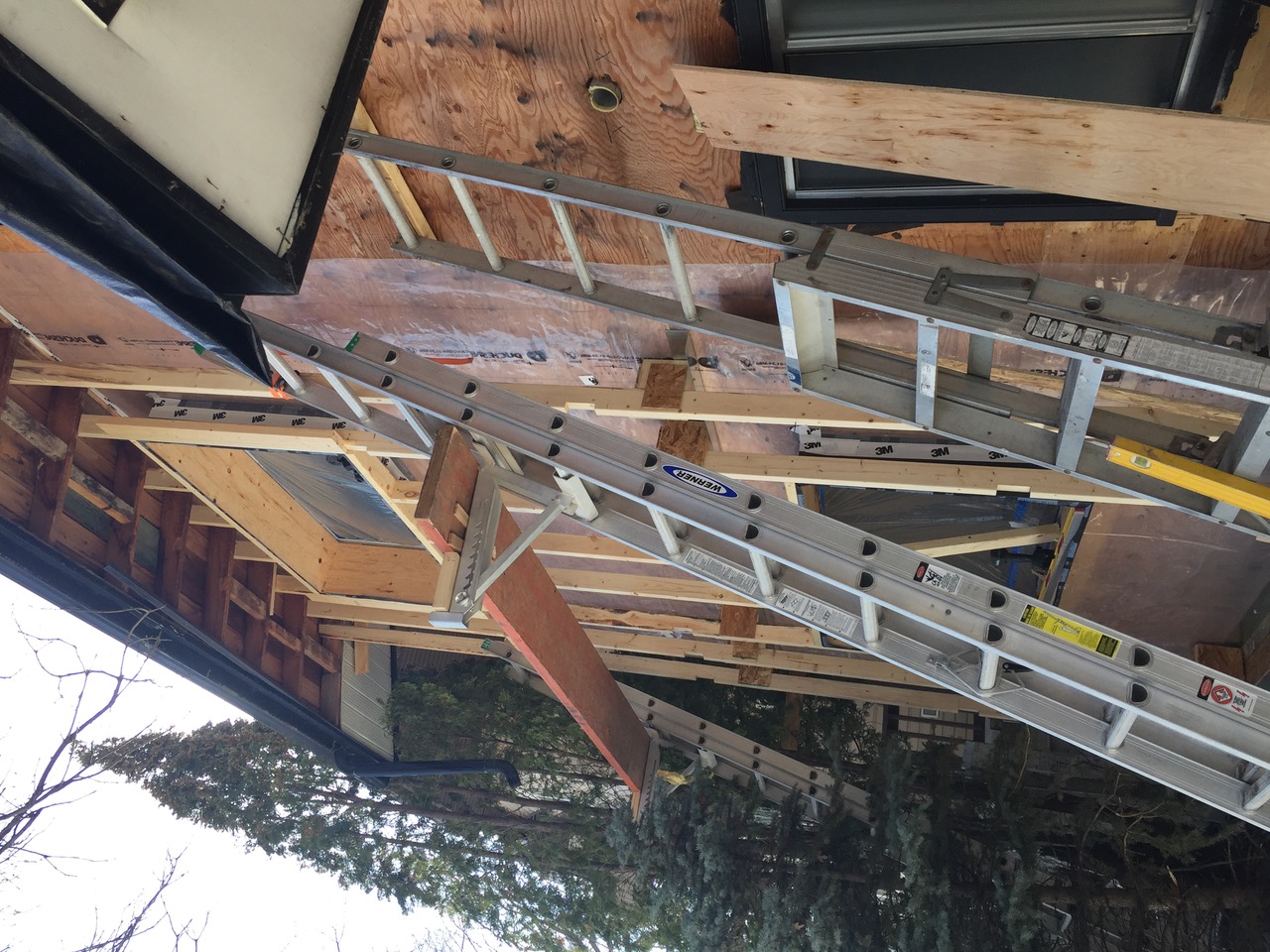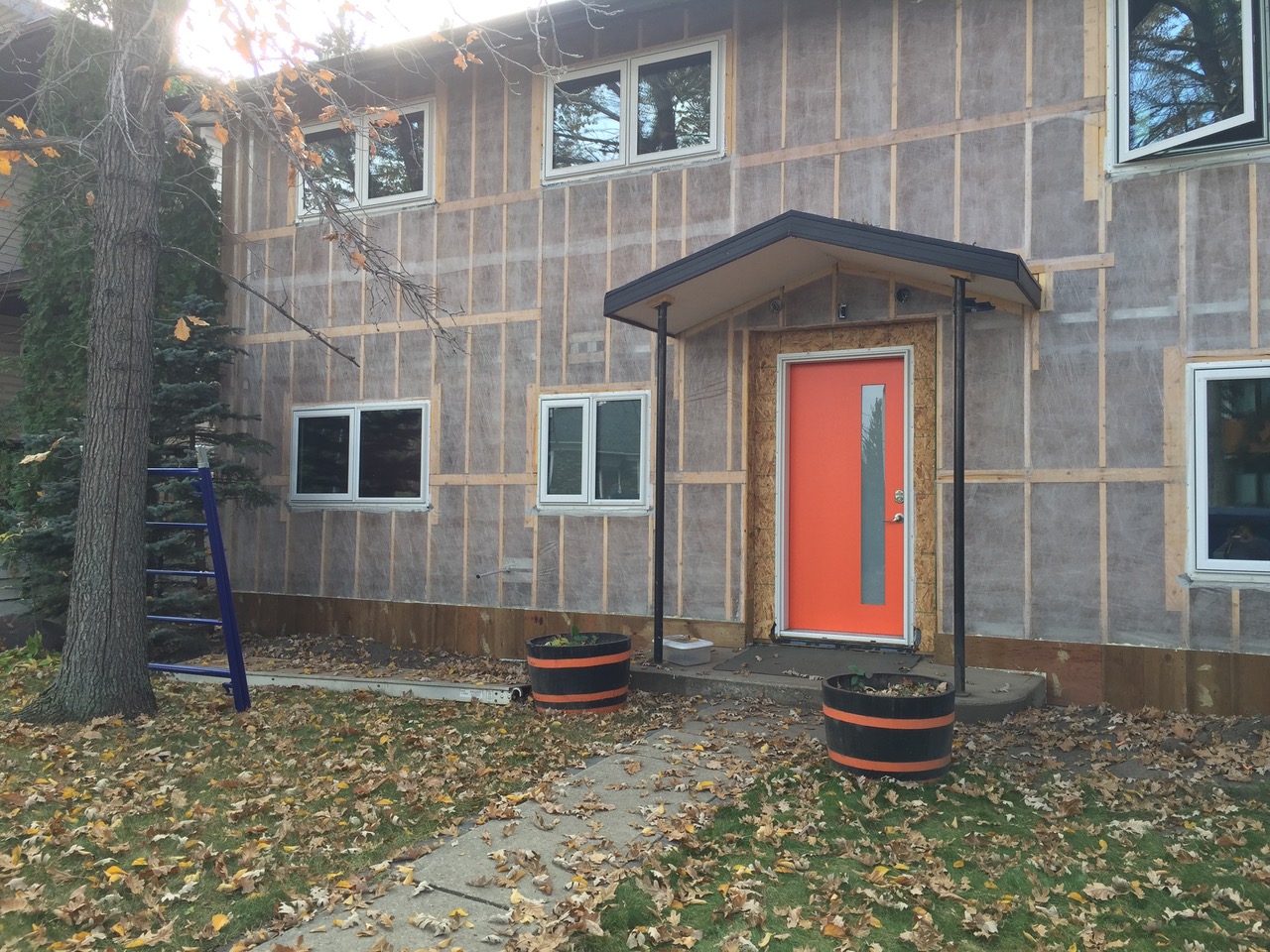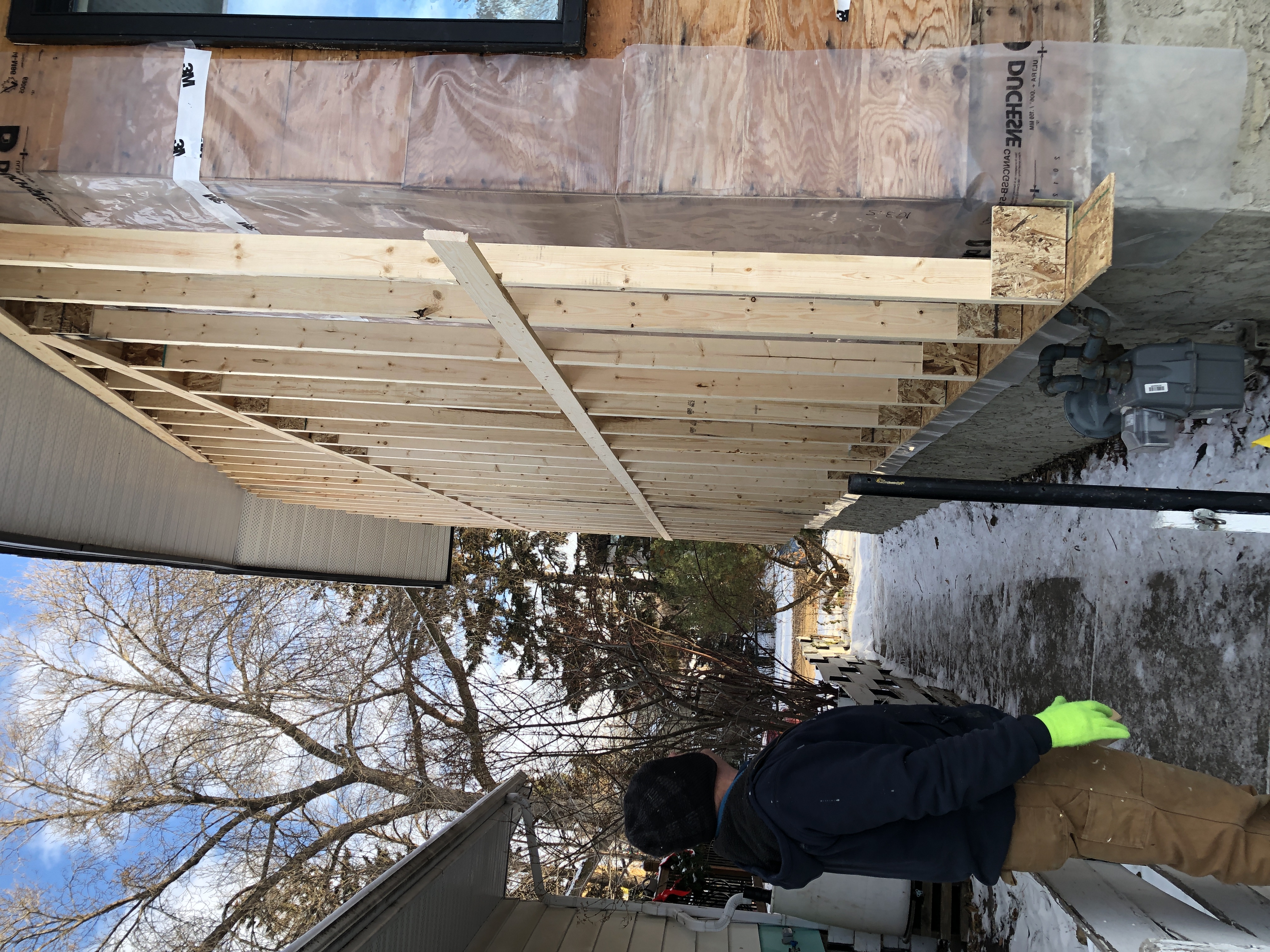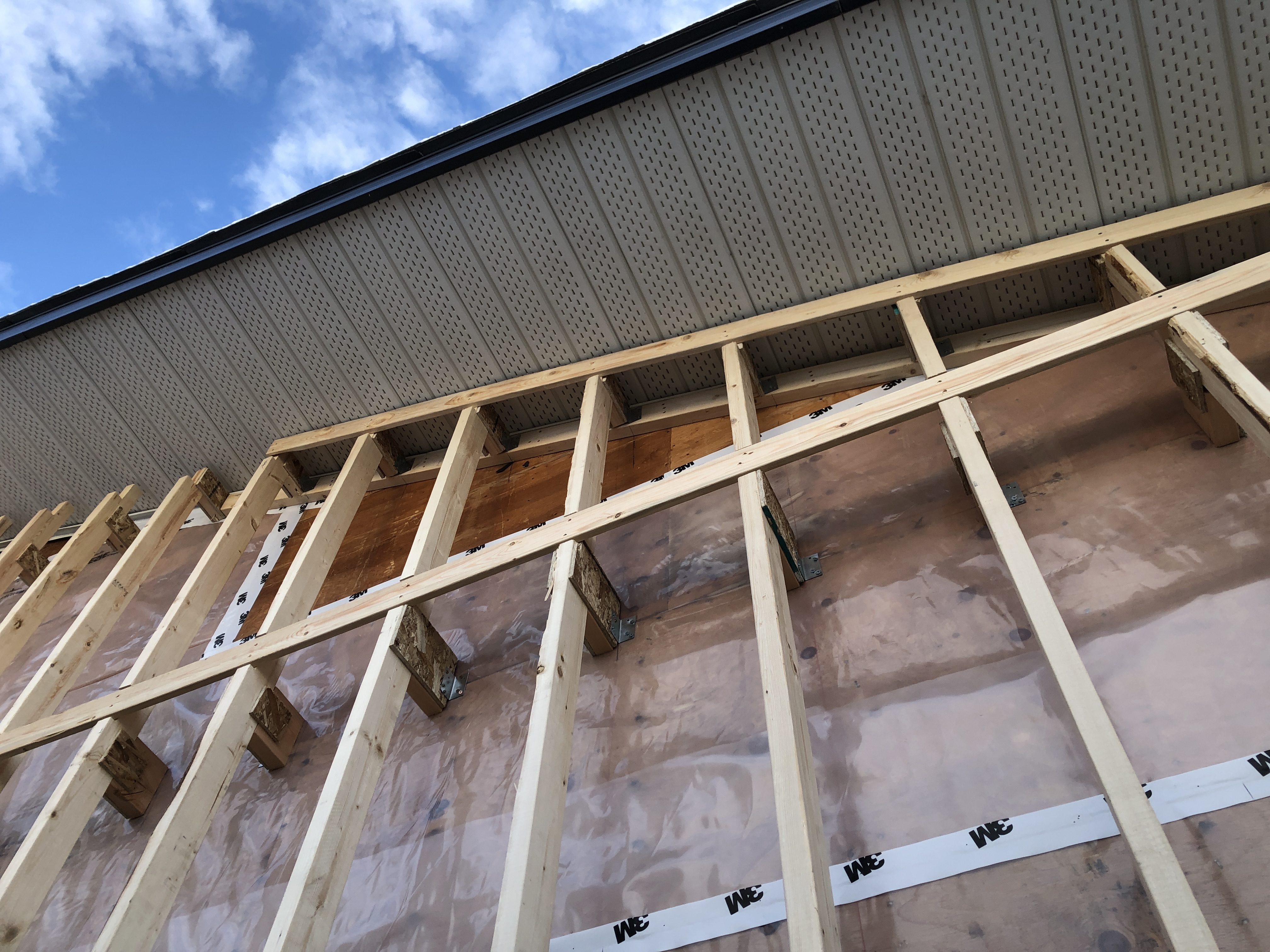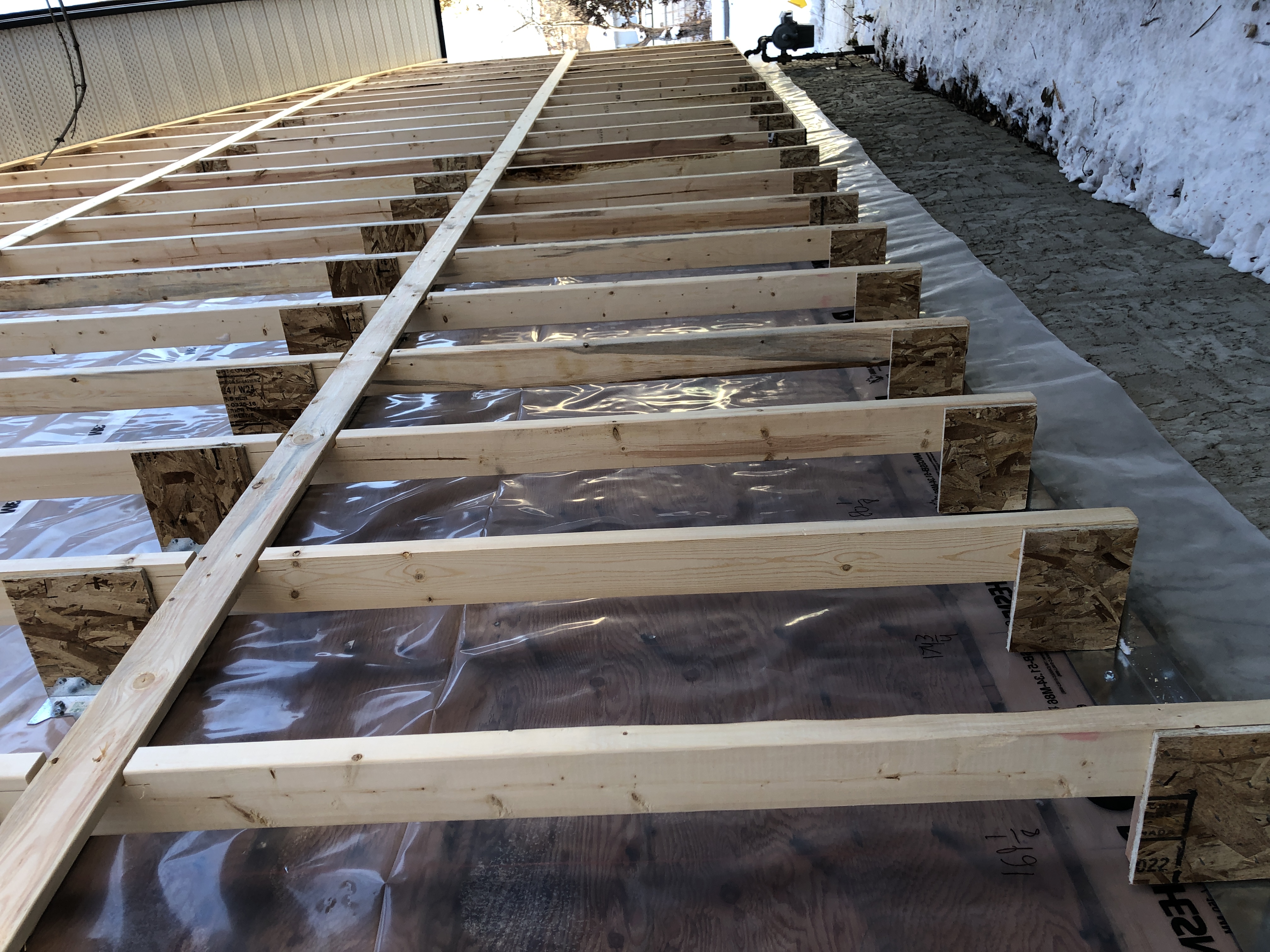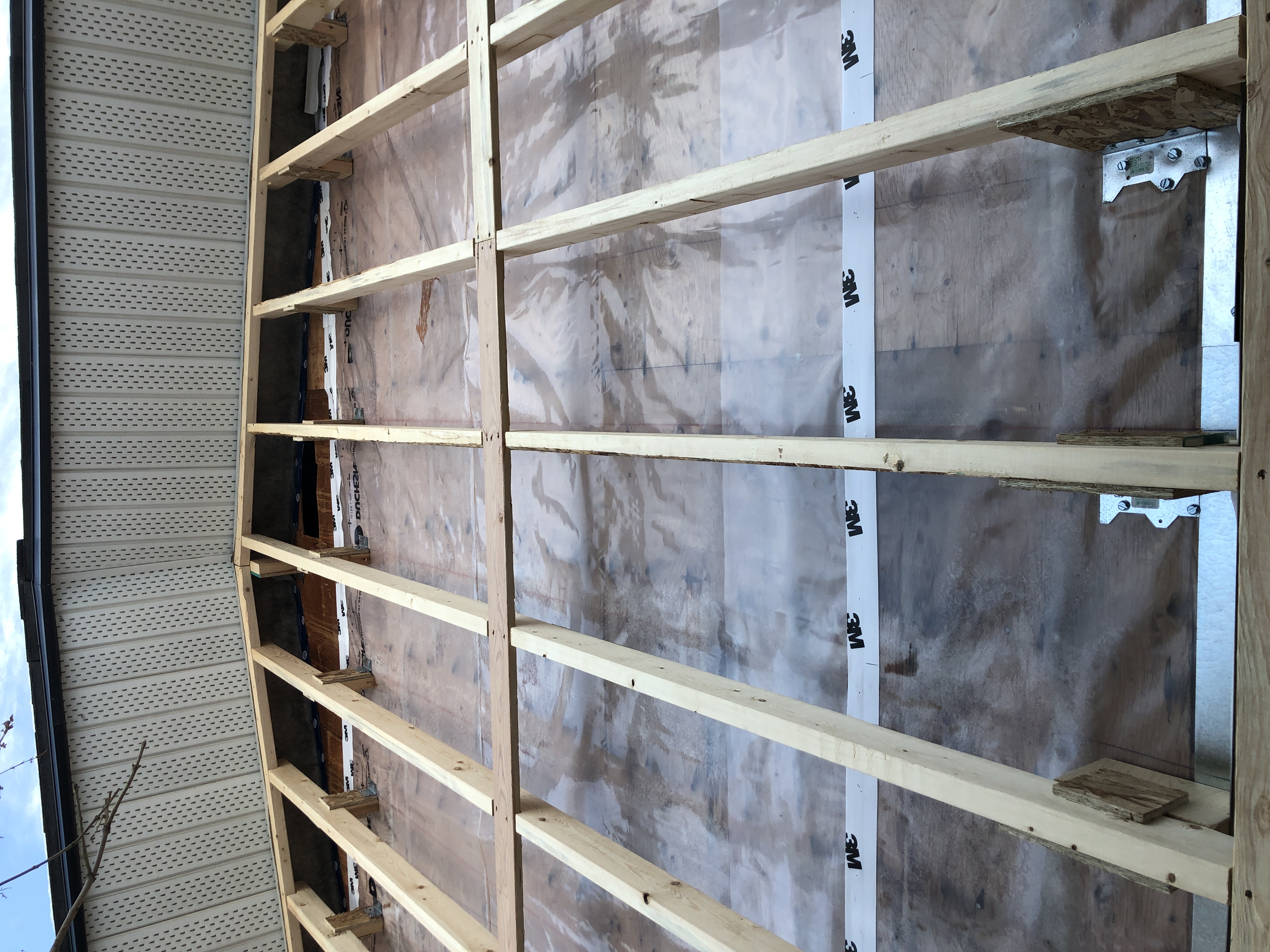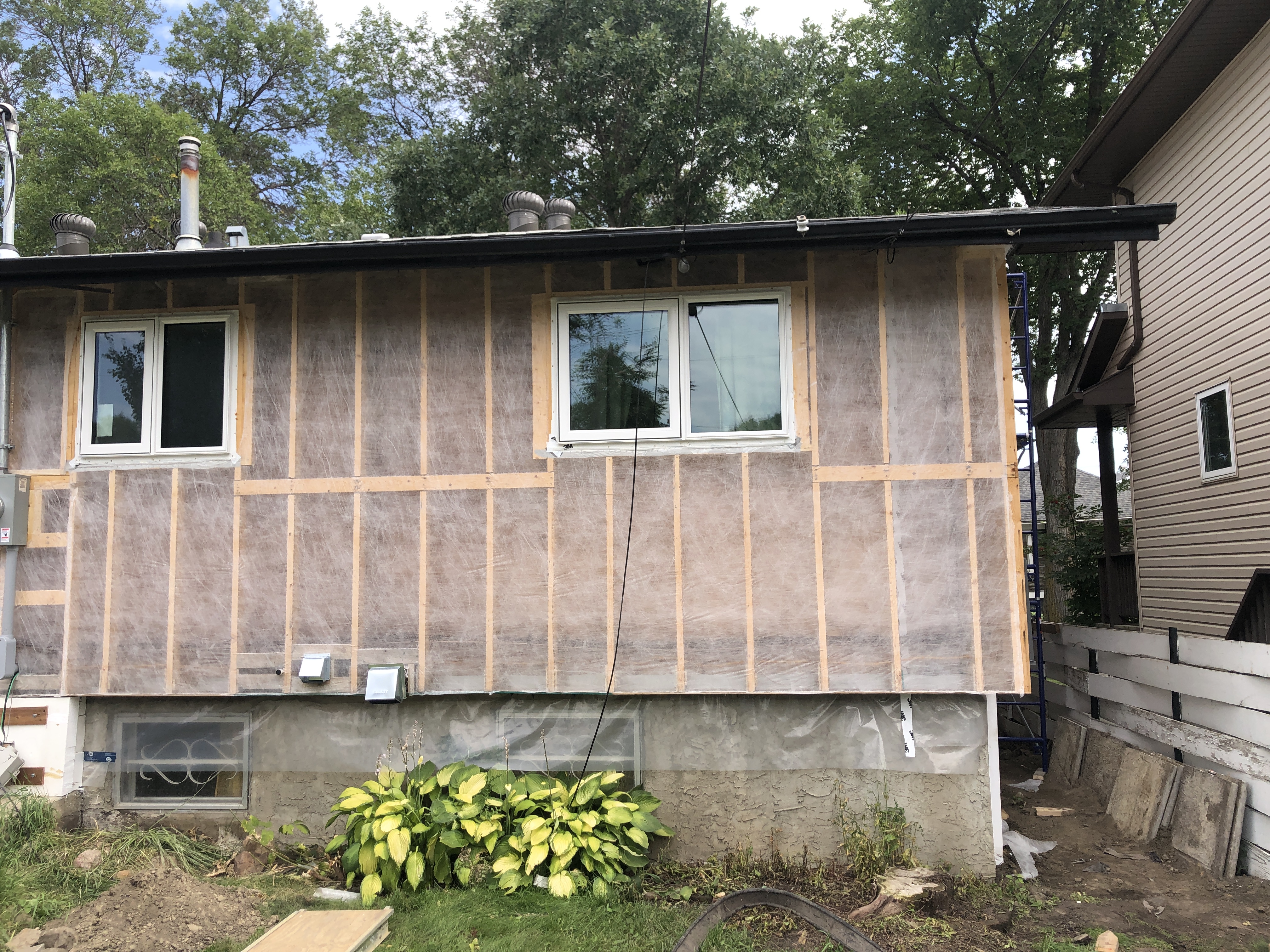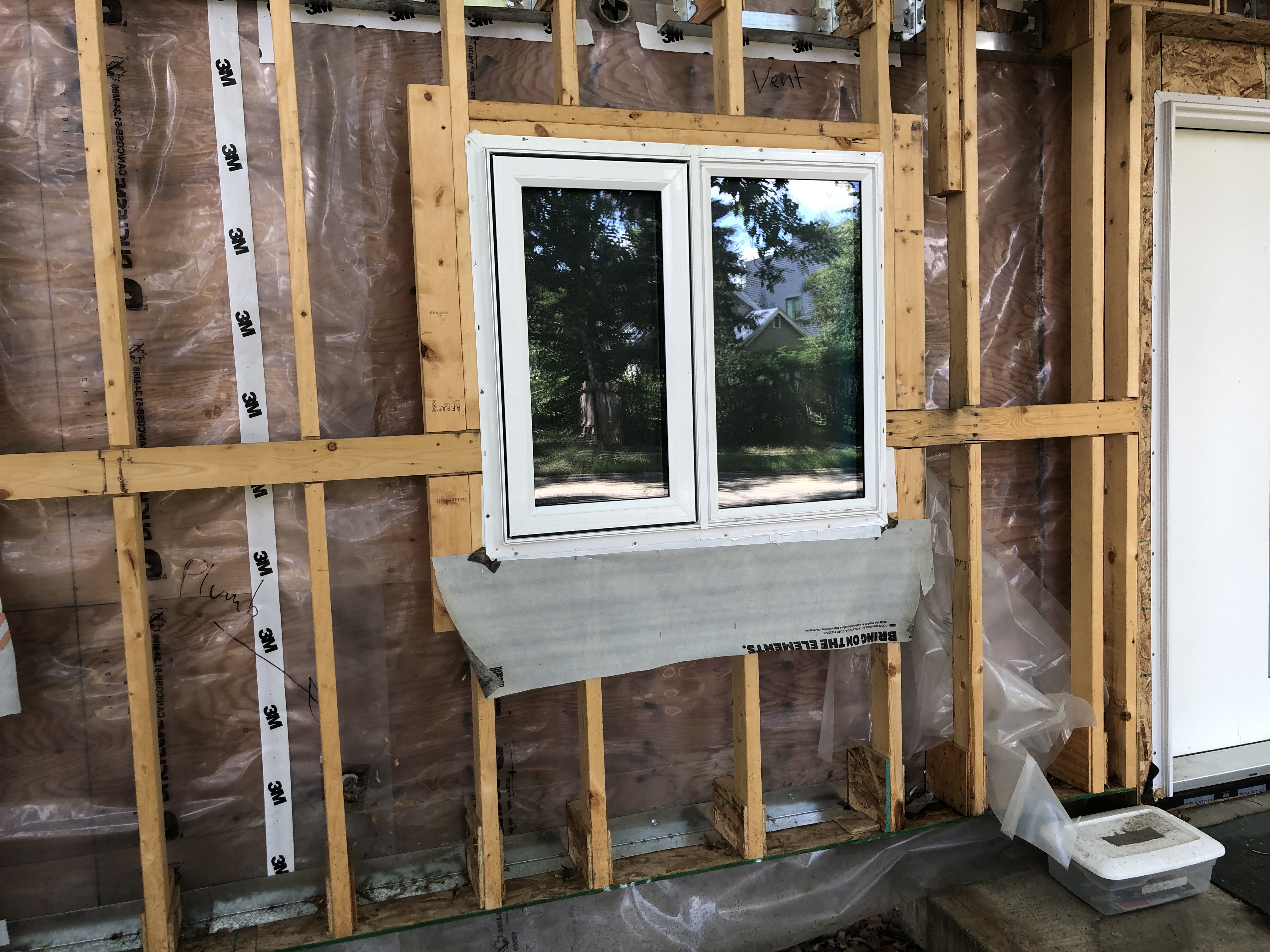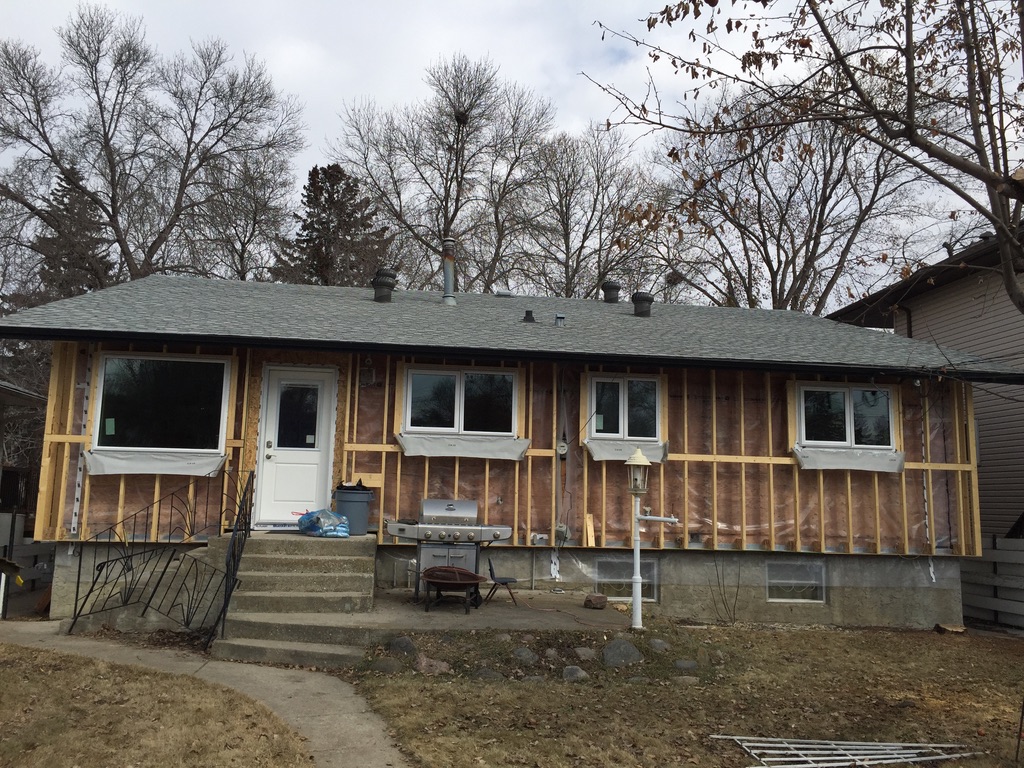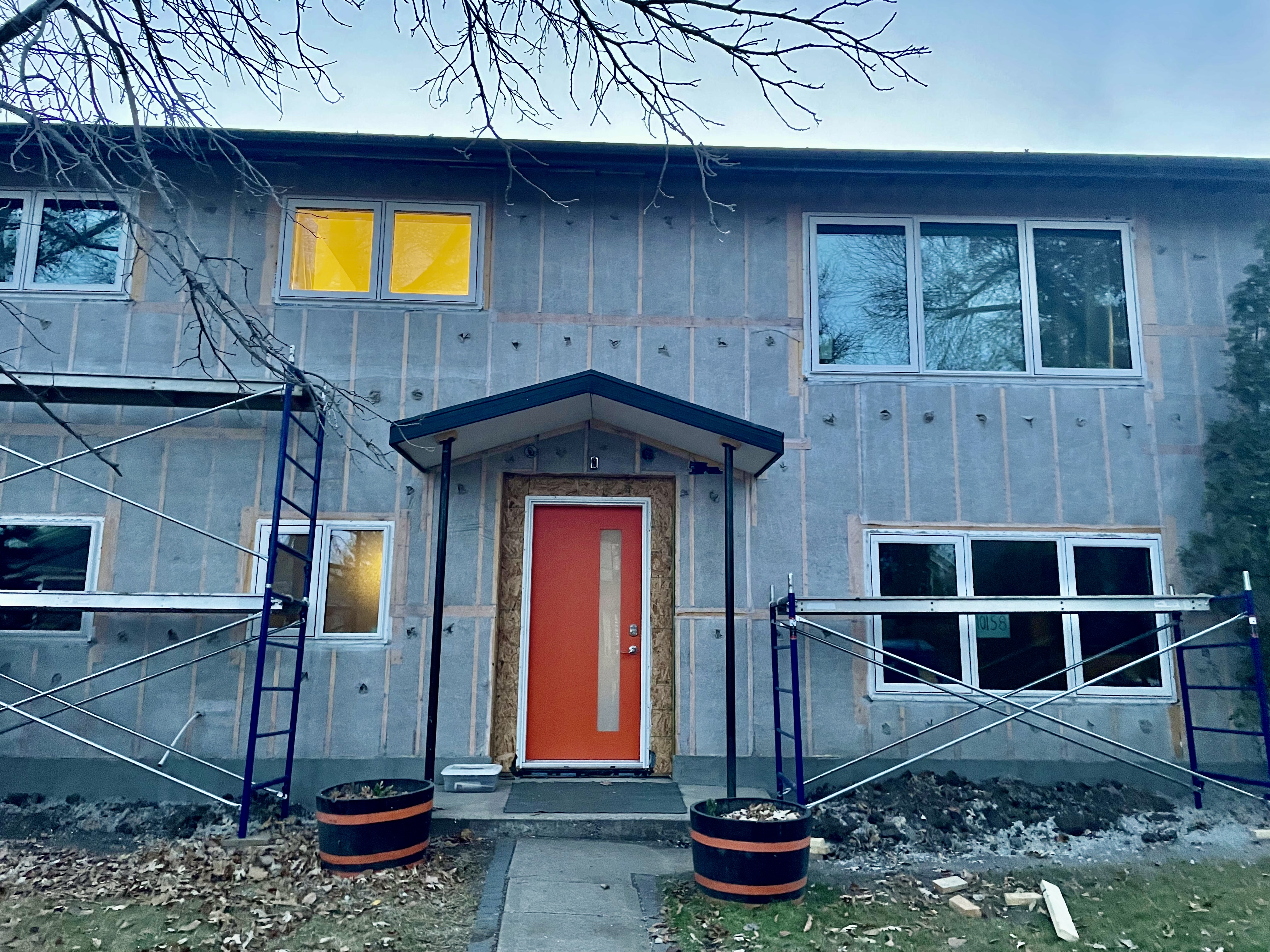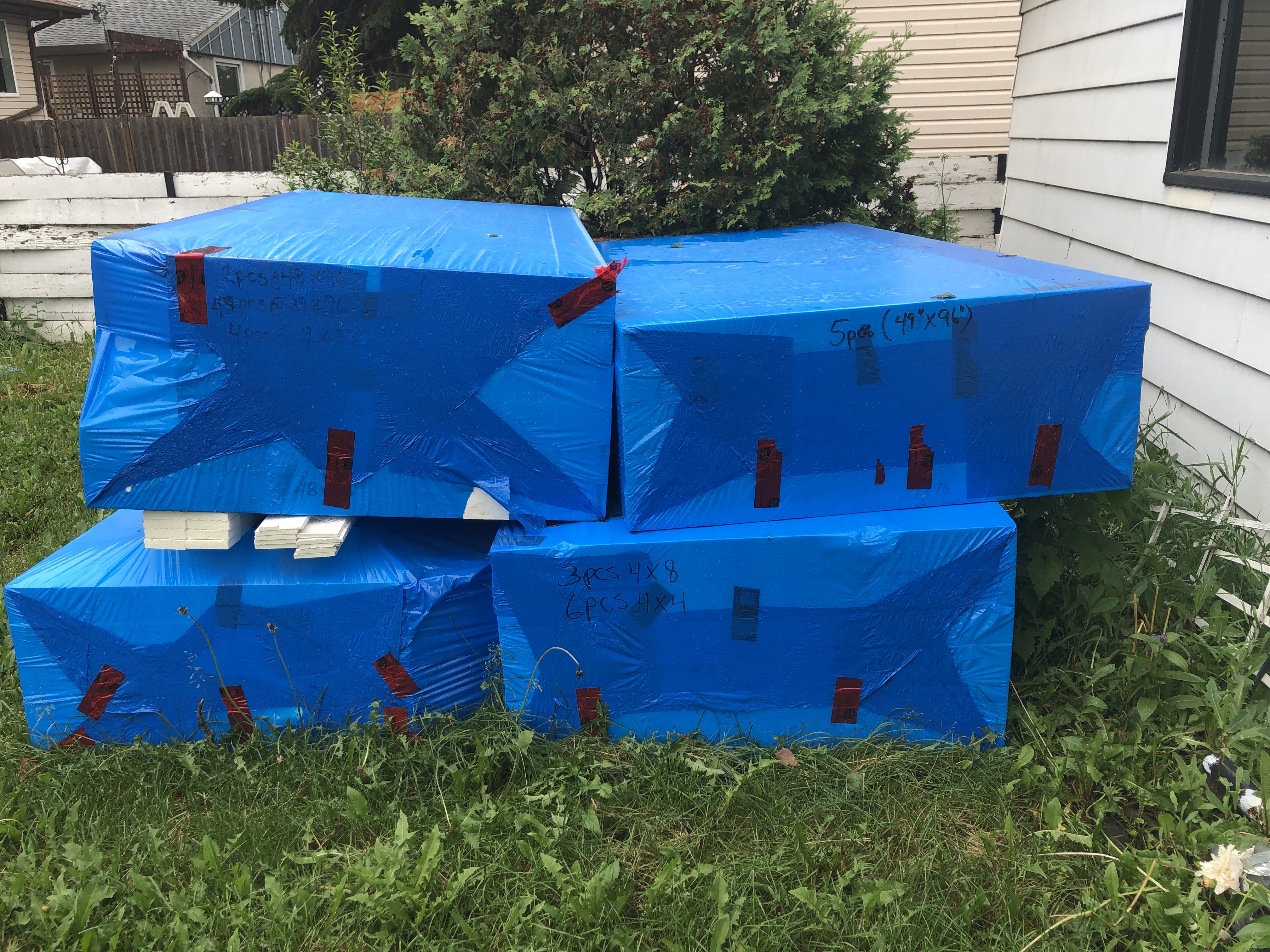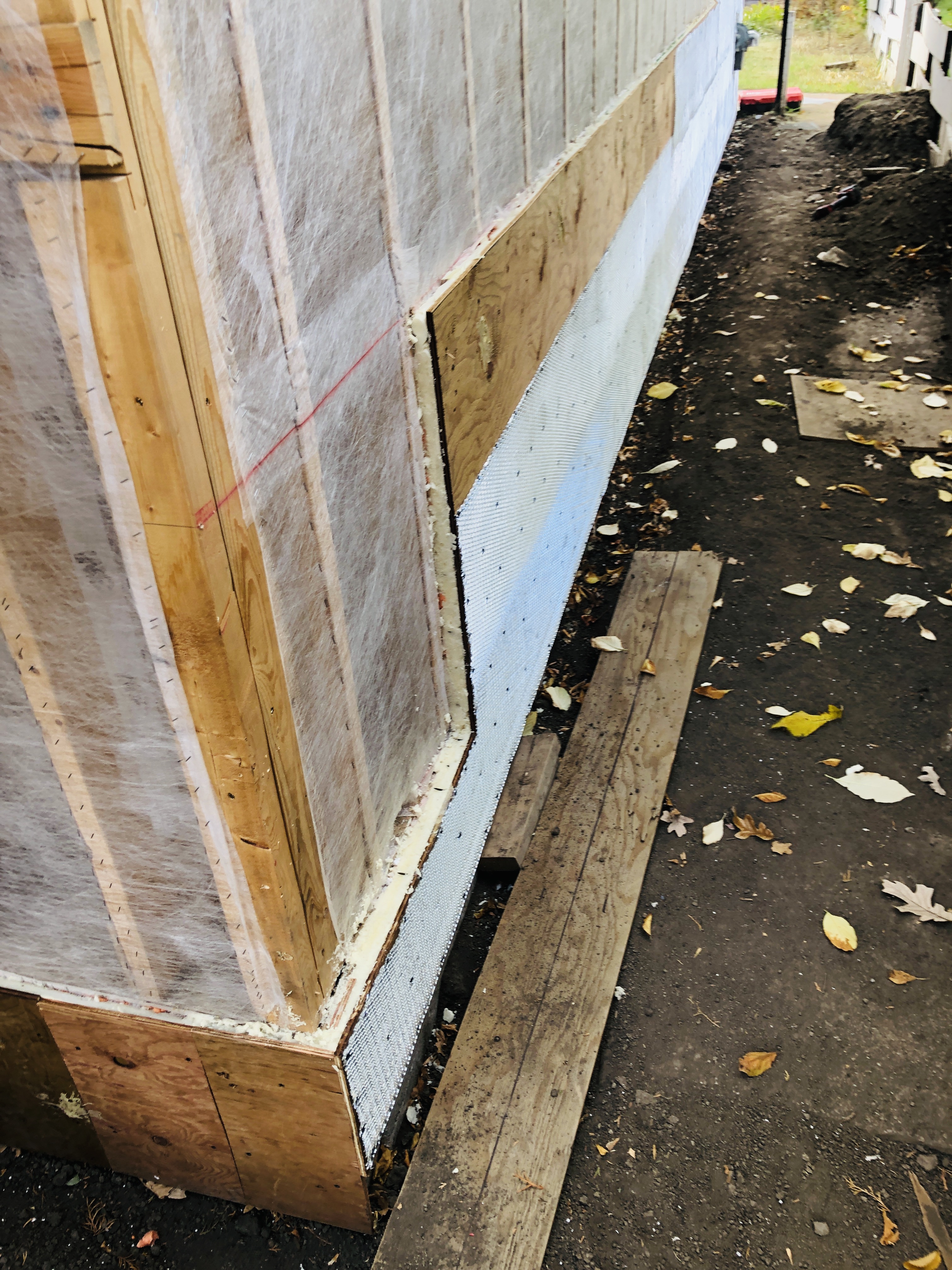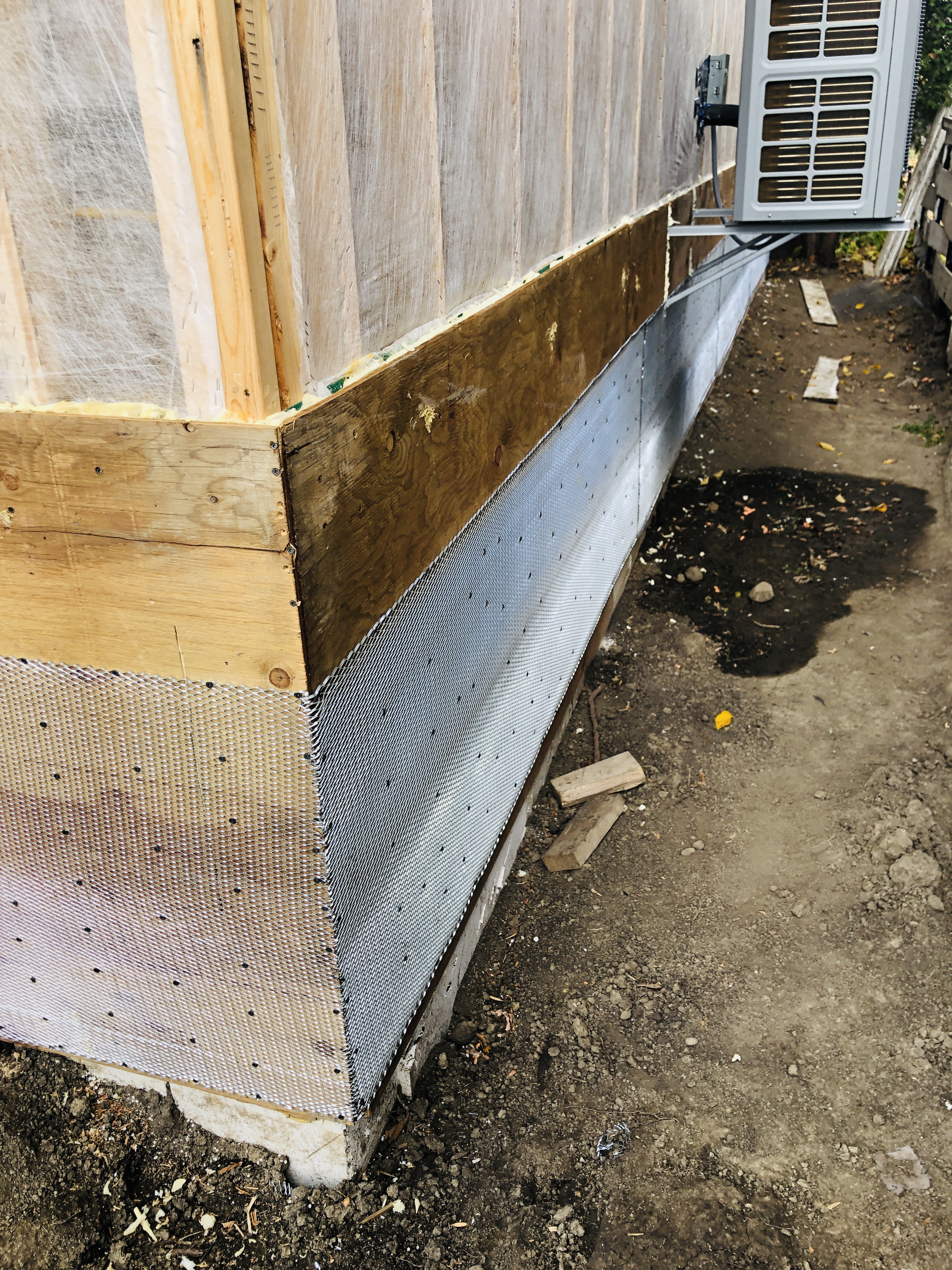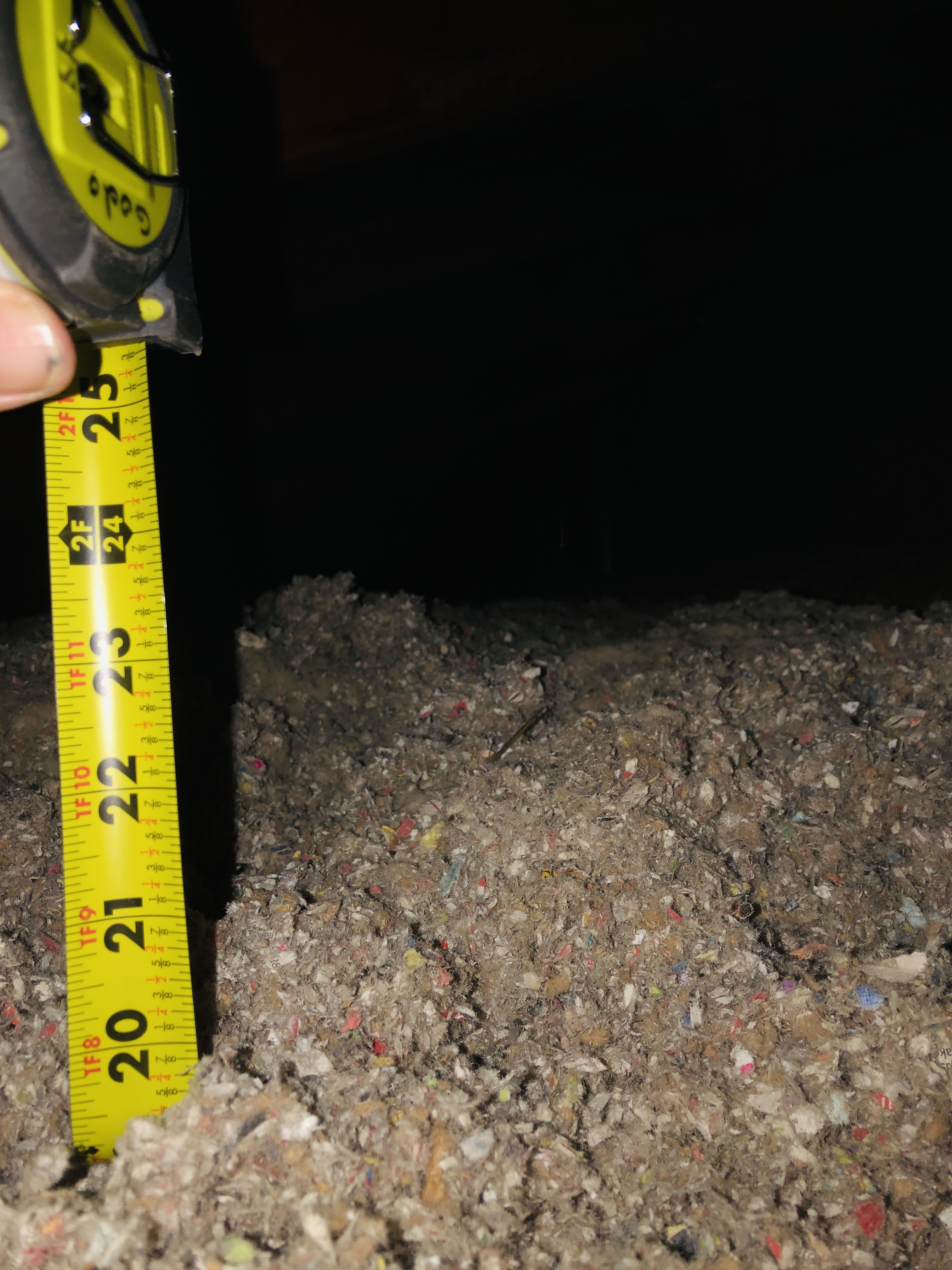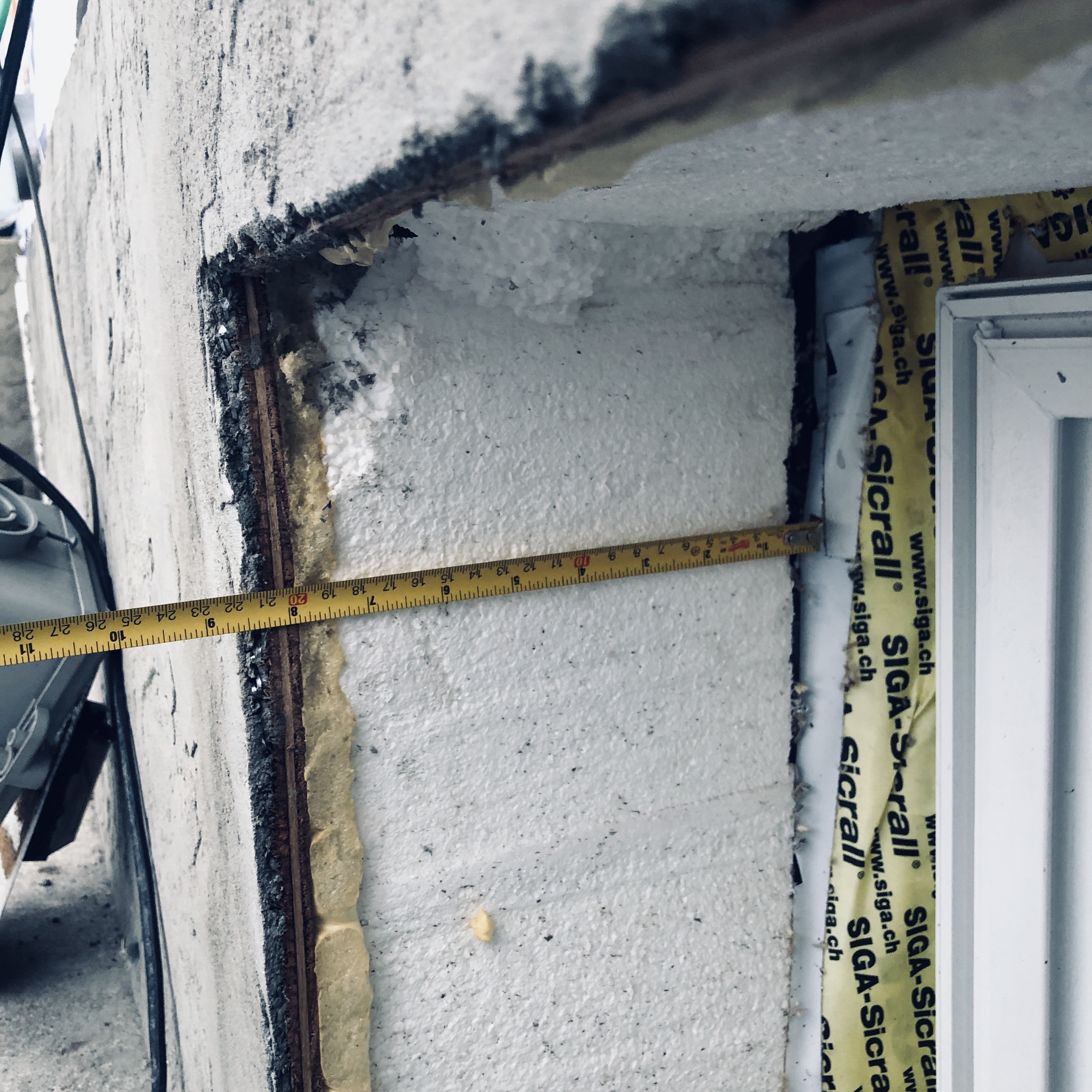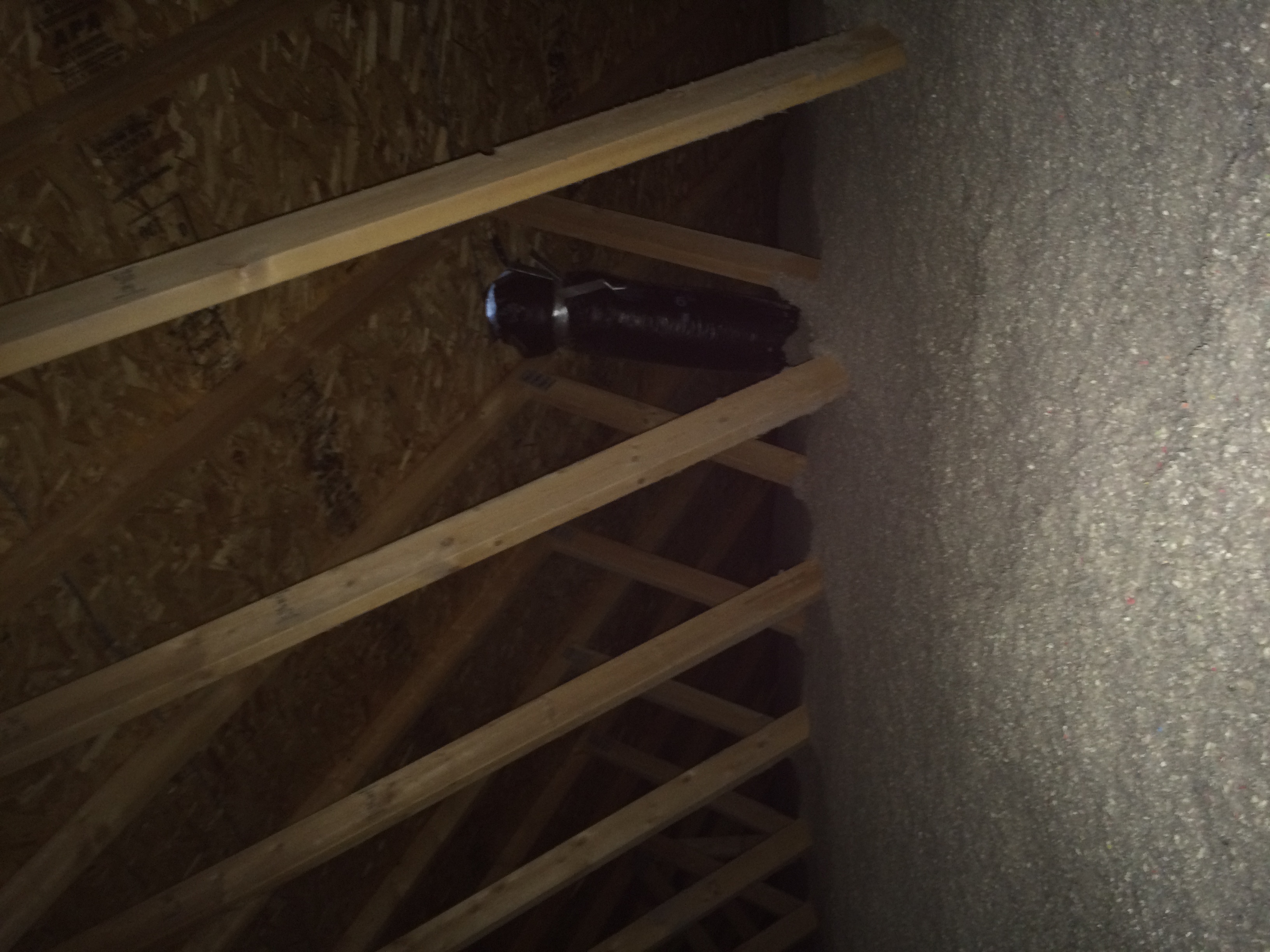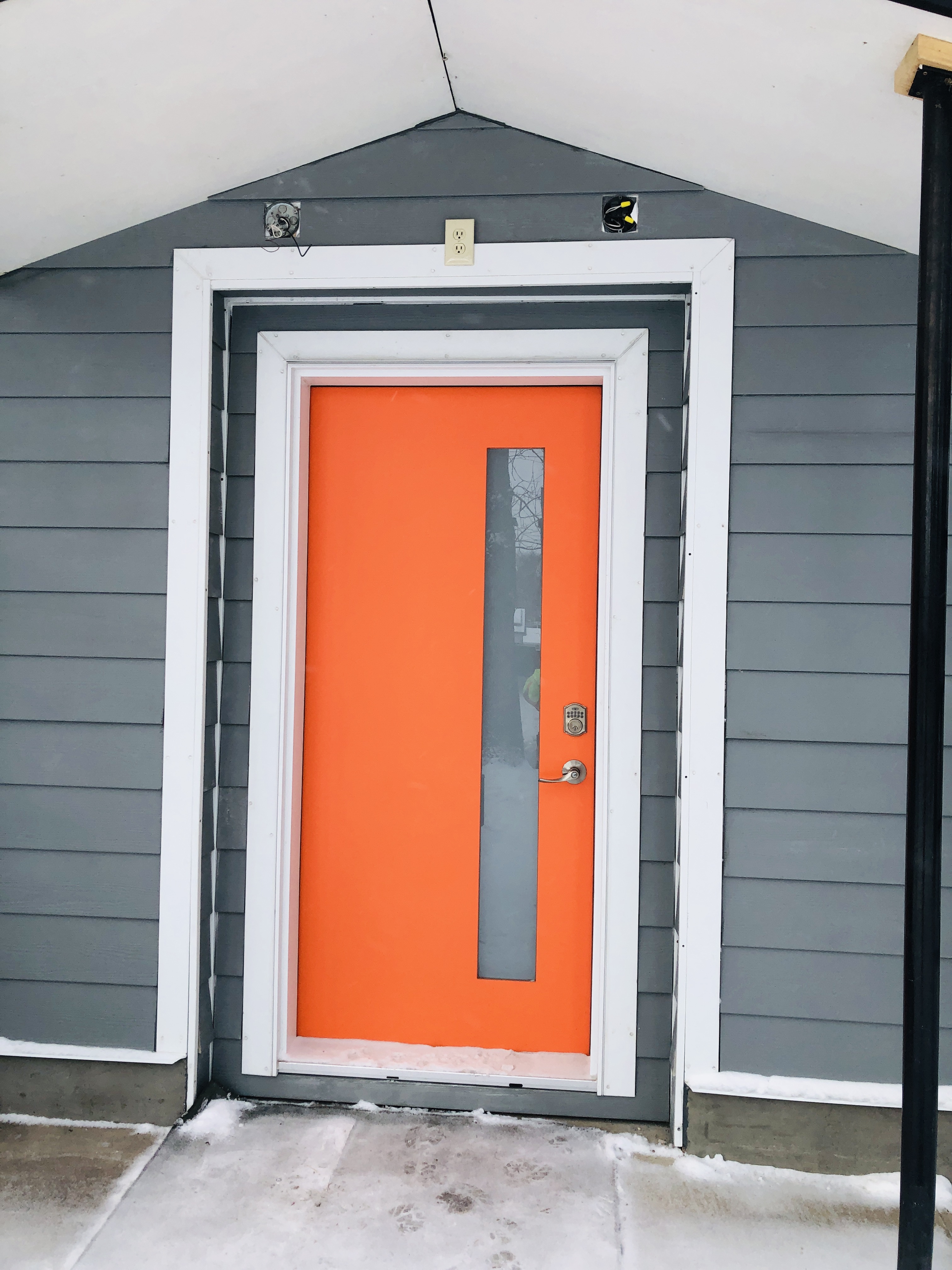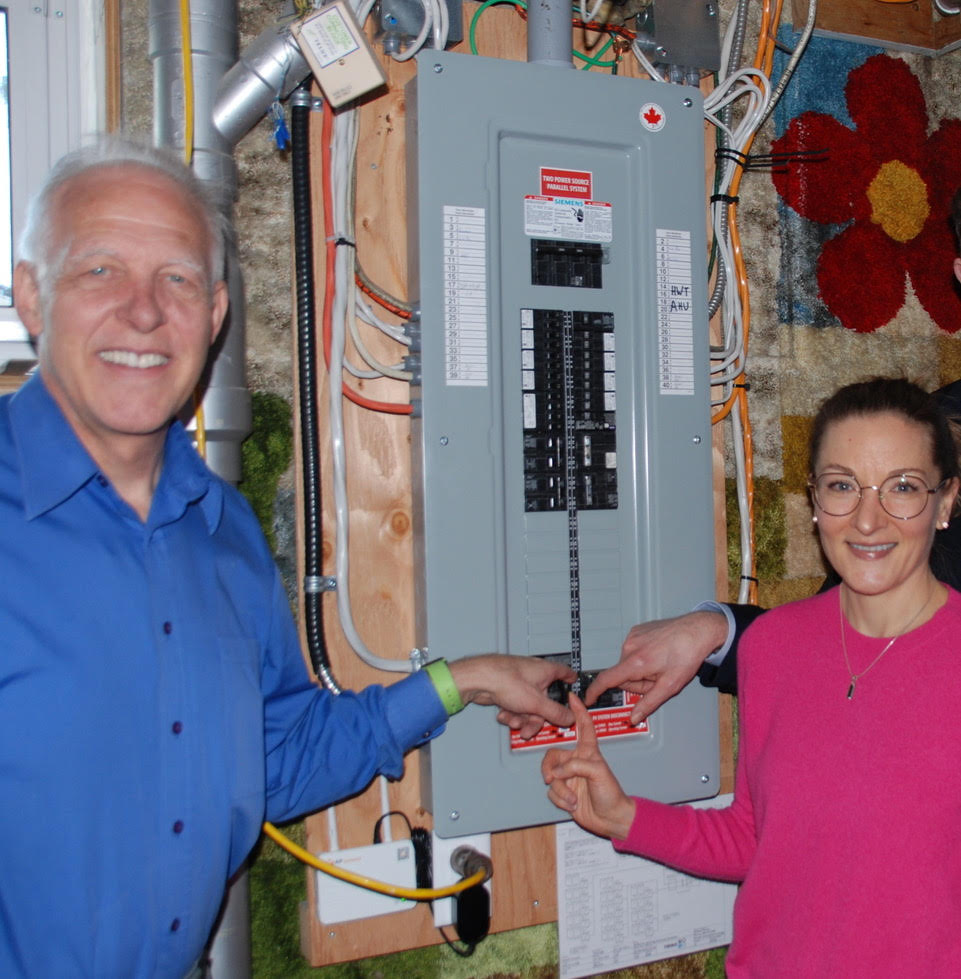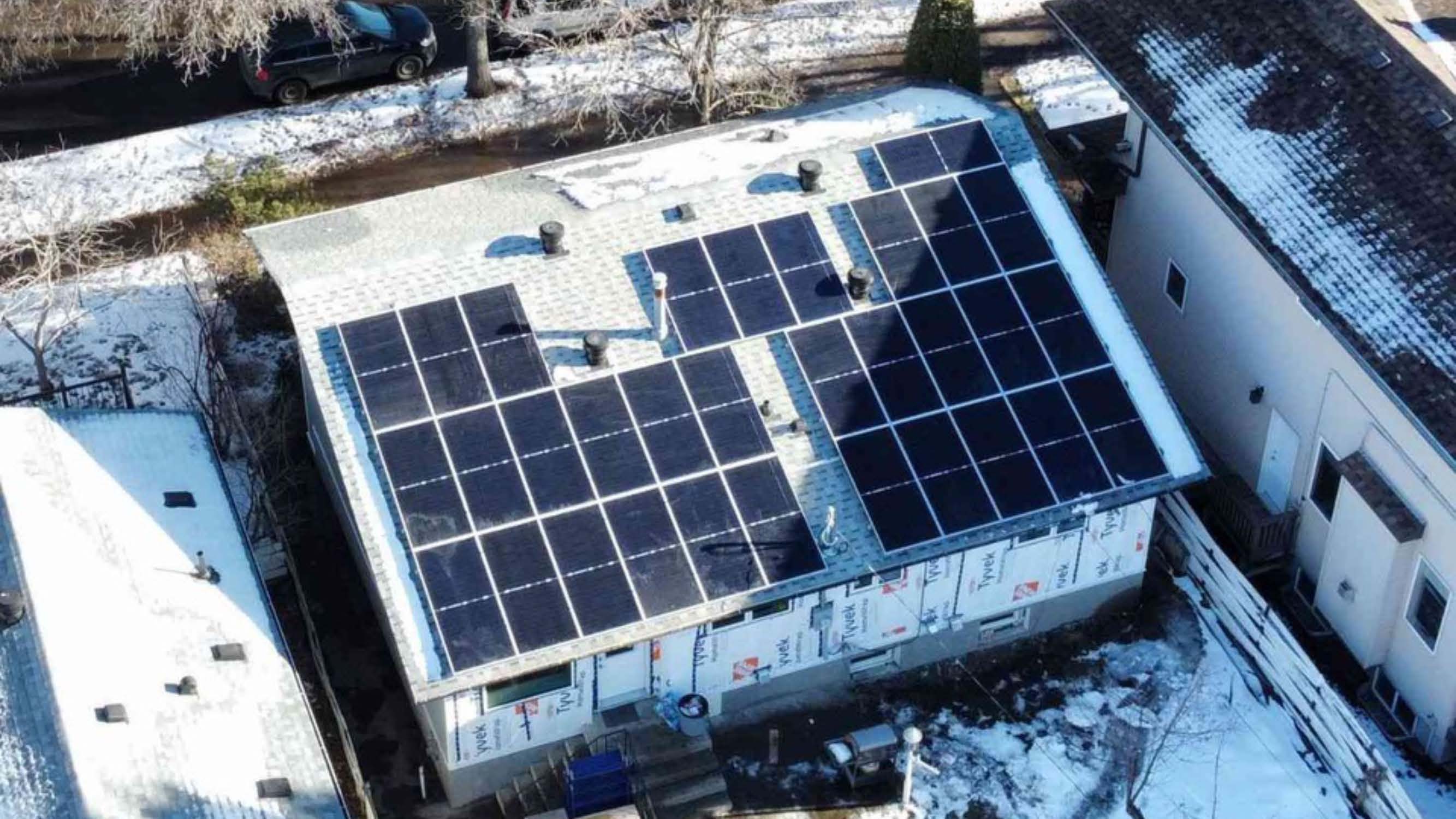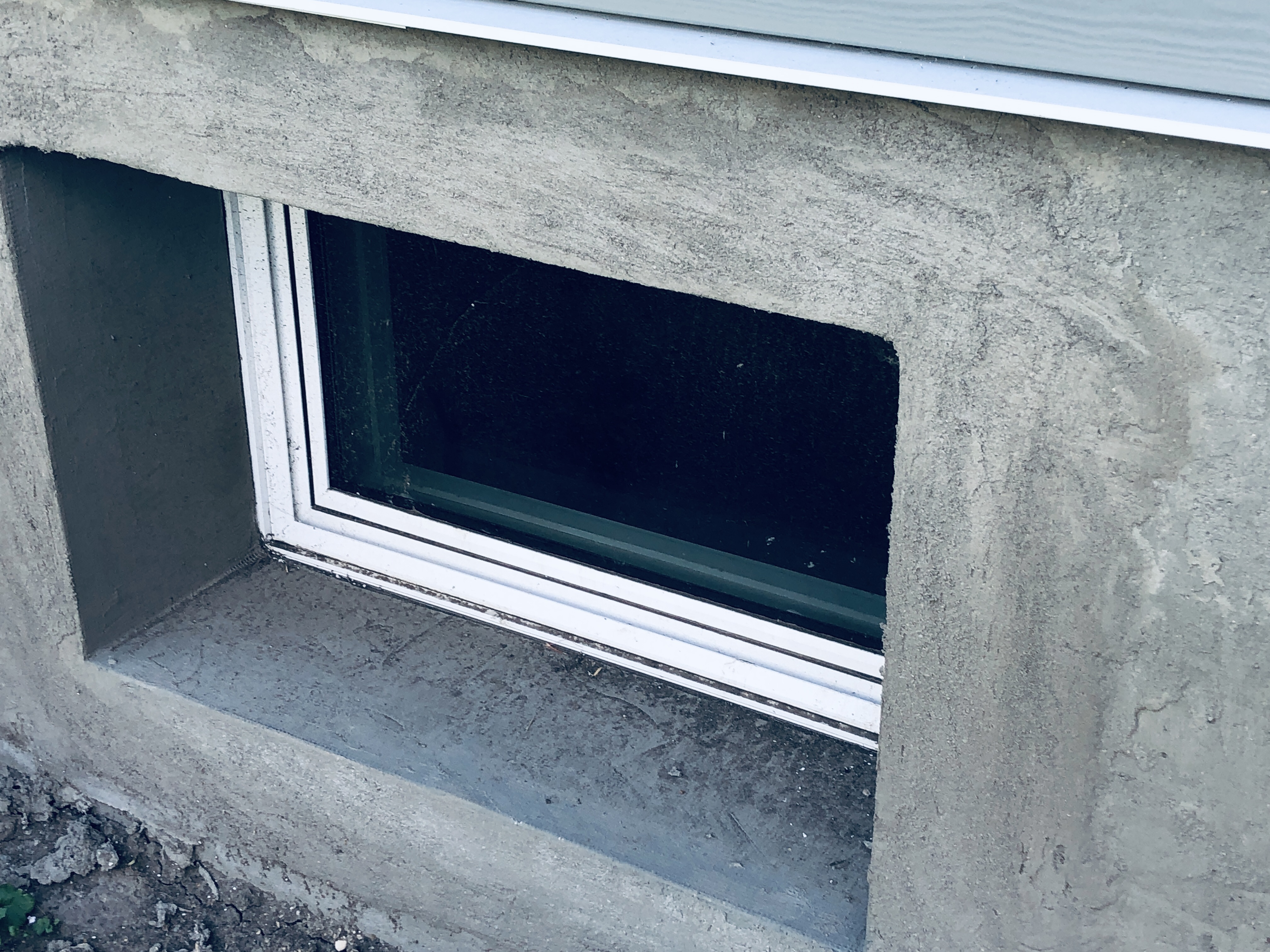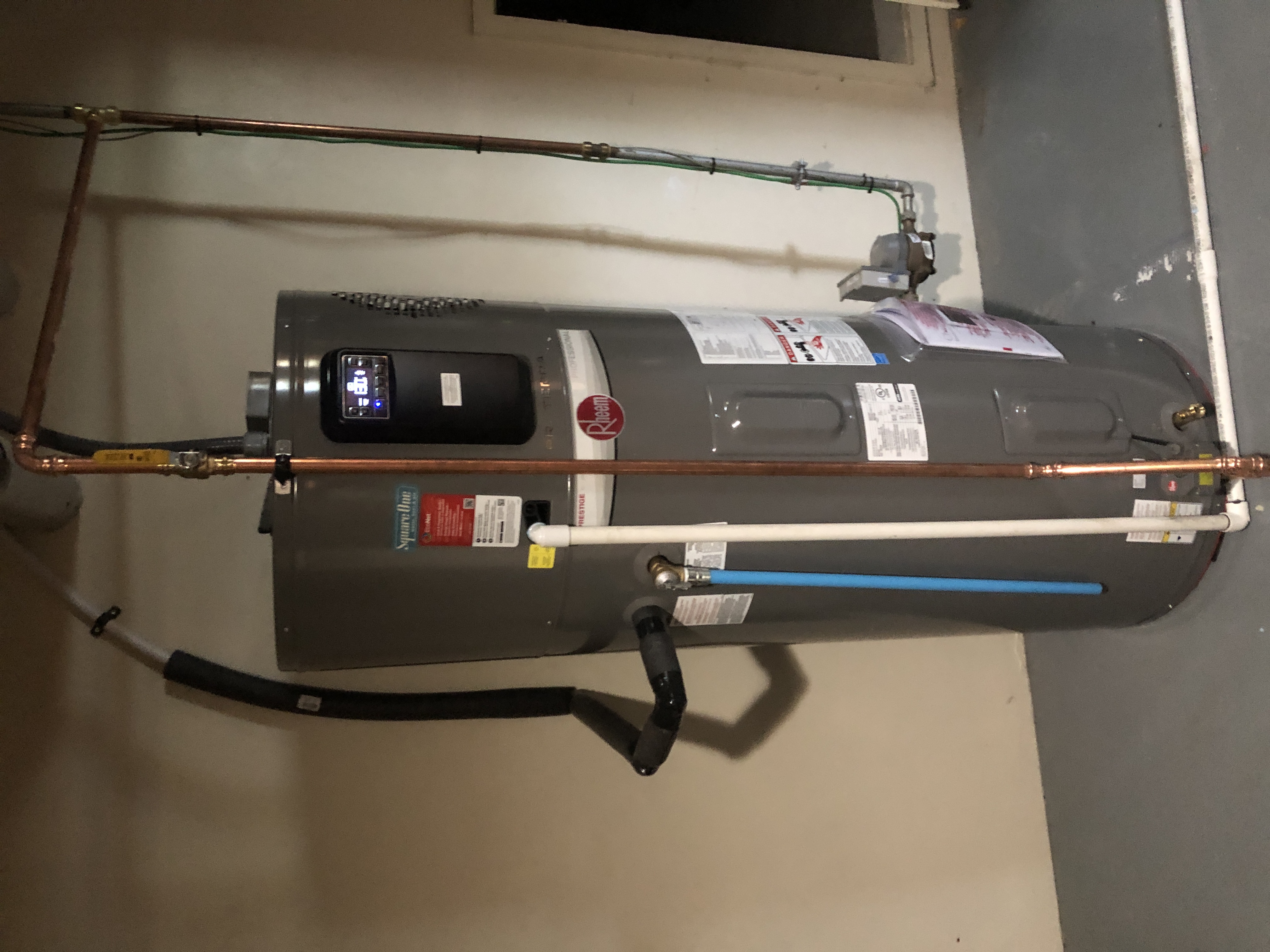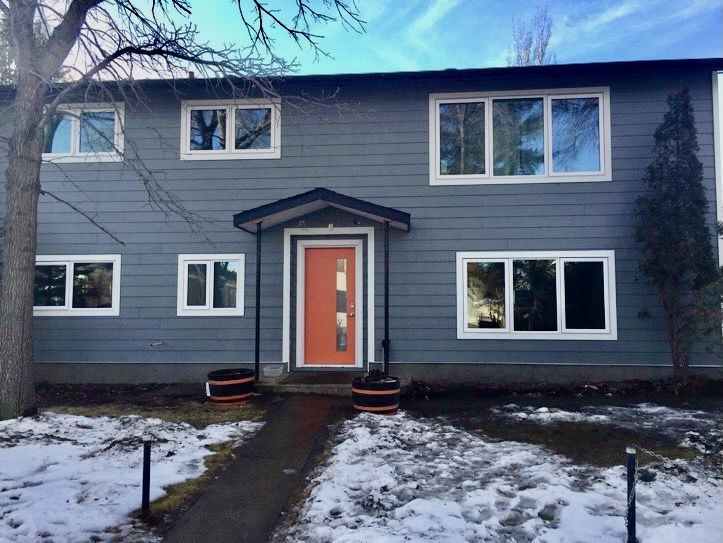'71 bungalow goes net-zero with a hat, a coat and a boot
This deep energy retrofit used "a hat, a coat, and a boot” approach, improving insulation, airtightness, and efficiency to create a net-zero home for under $150,000.
| Building Type | Single-Family Bi-Level | Location | Edmonton, AB |
| Year Built | 1971 | Foundation Type | Concrete (Full Basement) |
| Structure Type | Wood-Framed | Total Floor Area | 193.7m2 |
| Climate Zone | 7a | Heating Degree Days | 5120 |
| Retrofit Status | Complete | Year Completed | 2023 |
| Retrofit Phasing | No | Geometry Changed | No |
| Annual Energy Savings | 100.44% | Operational Carbon Savings | 14.31 tCO2eq/yt |
| Retrofit Type | Envelope and Mechanical | Performance Level | Net Zero |
Project Team
- Carbon Busters ( Builder )
Project Priorities
- Achieve Net Zero or Net Zero Ready
- Increase Thermal Comfort
- Reduce GHG Emissions
Upgrades
- Enhanced insulation
- Air sealing
- Triple-pane windows
- Air Source Heat Pump
- Heat pump water heater
- HRV system
- Full electrification
- Solar Panels
- 200A panel upgrade
Project Description
Planning the Retrofit
This deep retrofit, designed and built by Carbon Busters, followed an iterative process to find the least-cost approach while maximizing life cycle energy savings, carbon reduction, and financial returns. The strategy focused on improving the building envelope, enhancing airtightness, upgrading mechanical systems, and integrating renewables. A life cycle approach guided material selection, prioritizing low-embodied carbon options wherever possible.
Building Envelope & Insulation
A key principle of the retrofit was the “hat, a coat, and a boot” approach, ensuring continuous insulation and air sealing across the home. The team used cellulose insulation for its low embodied carbon—approximately six times lower than fiberglass and 30 times lower than rigid foam. Cellulose was blown on top of existing insulation in the attic, and compressed in the walls, while EPS Type 1 insulation was applied at and below grade.
The project also had all windows upgraded to triple-pane, low-E, argon-filled models. Carbon Busters installed and sealed a continuous vapor barrier (6-mil poly with acoustic sealant). Additional sealing was applied at interfaces between the walls and attic.
Advanced Envelope System
To minimize thermal bridging and reduce material use, the retrofit employed an 8-inch standoff truss system—a modified version of the Larssen Truss—developed in collaboration with structural engineer Lance White. The system used a single 2×4 stud with 2×6 studs and gusset plates to create a high-performance exterior wall. The team built the new envelope outside the existing structure, requiring the removal of existing siding. At the foundation, the OSB bottom plate was butted to the 8-inch basement wall (EPS foam). Spray foam was used to seal the joint.
Mechanical Systems & Electrification
The home’s heating and cooling system was upgraded to a Tosot air source heat pump (ASHP), complemented by a Rheem heat pump water heater and a heat recovery ventilator (HRV). The retrofit fully electrified the home by replacing all gas appliances, including a transition from a gas stove to induction cooking. Additional efficiency measures included upgrading from a top-loading washer to a front-loading model and switching from a conventional electric dryer (800 kWh) to a heat pump dryer (125 kWh). A 200-amp electrical panel upgrade supported these changes.
Renewables & Energy Performance
To achieve EnerGuide net-zero certification, the home’s solar system was expanded from 11.16 kW to 13.02 kW DC. The system was designed to offset the home’s energy consumption, making it a net producer of renewable electricity.
Despite the depth of these upgrades, the project maintained a total cost of under $150,000, demonstrating a practical, cost-effective pathway to deep energy retrofits with a strong focus on long-term performance and sustainability.
Lessons Learned
Achieving the EnerGuide net-zero label required increasing the solar system size beyond initial estimates, adding costs but ensuring full energy offset. For insulation, rather than excavating to insulate below the foundation, Carbon Busters doubled the insulation thickness at grade—8 inches all around and 18 inches deep—continuing up to the top of the exposed foundation. This approach significantly reduced costs while still improving thermal performance.
The modified truss design proved to be both structurally sound and highly effective in minimizing thermal bridging. To further manage costs and simplify construction, crews used acrylic parging instead of concrete, as it could be applied directly to the foam insulation. The project successfully met its performance goals while staying within budget.
Before & After
General |
Envelope |
Mechanical & Electrical |
Annual Energy Usage |
Carbon Emissions* |

